School uniforms from the 1880s
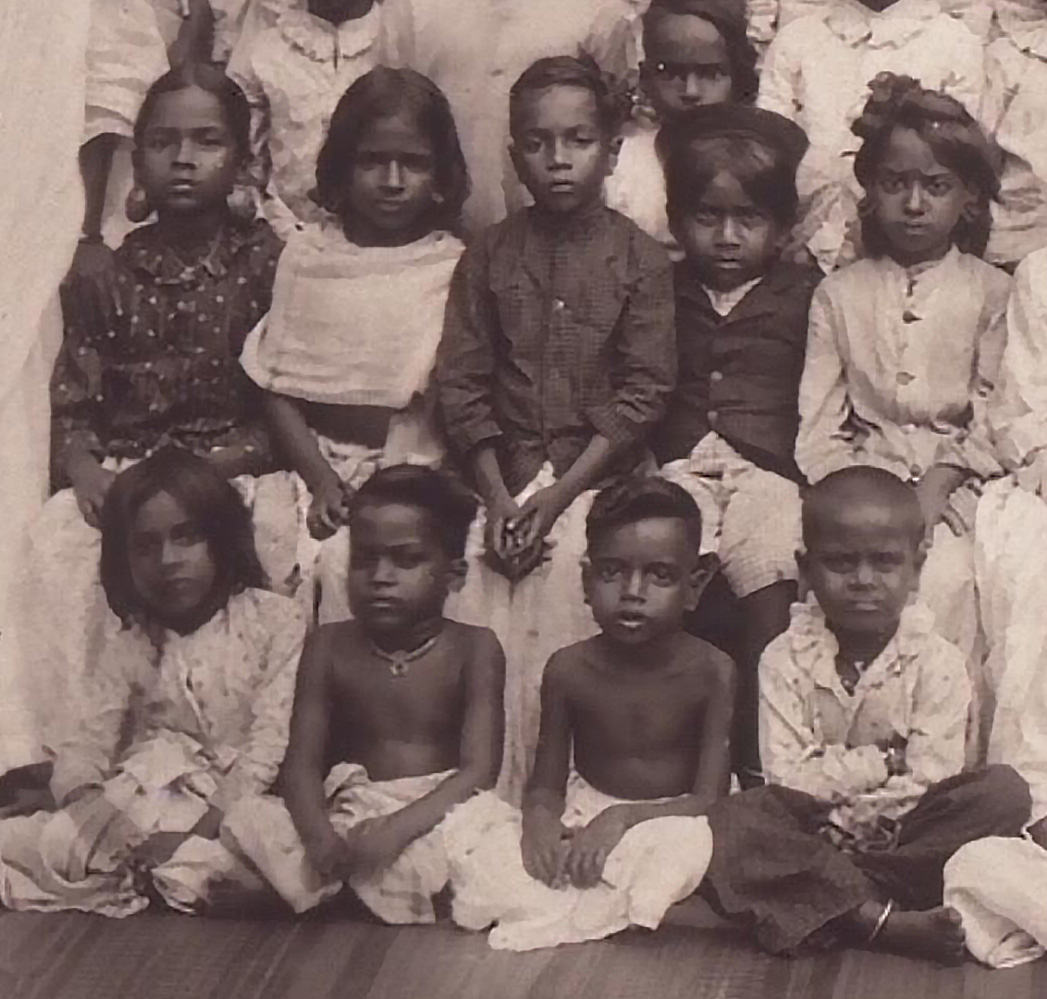
Importance of Clothing
Have you heard about the Breast Cloth Movements in the mid-nineteenth century by Nadar women and the Kallumalla Samaram in 1915 by Pulaya women?
The movements were more about breaking the shackles of caste than modesty, though traditional historians would have us believe otherwise.
If you were in colonial India, what you wore showcased your social affiliation and your caste position. In other words, clothes were a way to show whether you supported the British or India. Not always, but in most cases. Women and men use clothes for self-expression. Colonial Kerala experienced changes in the social, political, and economic spheres. Many traditional customs and systems, including women’s clothing, changed during this period.
“After the Dutch and the British entered our country, they imported textiles and flooded the market, influencing dress materials and styles,” said Nair Supriya Damodaran, Fashion Technology teacher, Ernakulam, 2023.
Upper Caste Styles in North Travancore
Upper-caste women wore clothes in a style different from what lower-caste women did in colonial Kerala. The women in the picture appear to be upper caste women with their hair tied in a topknot and an upper cloth covering their chest. Unlike other women missionaries in South Travancore, Ms Blandford, a missionary, worked among the Nairs and Brahmins.
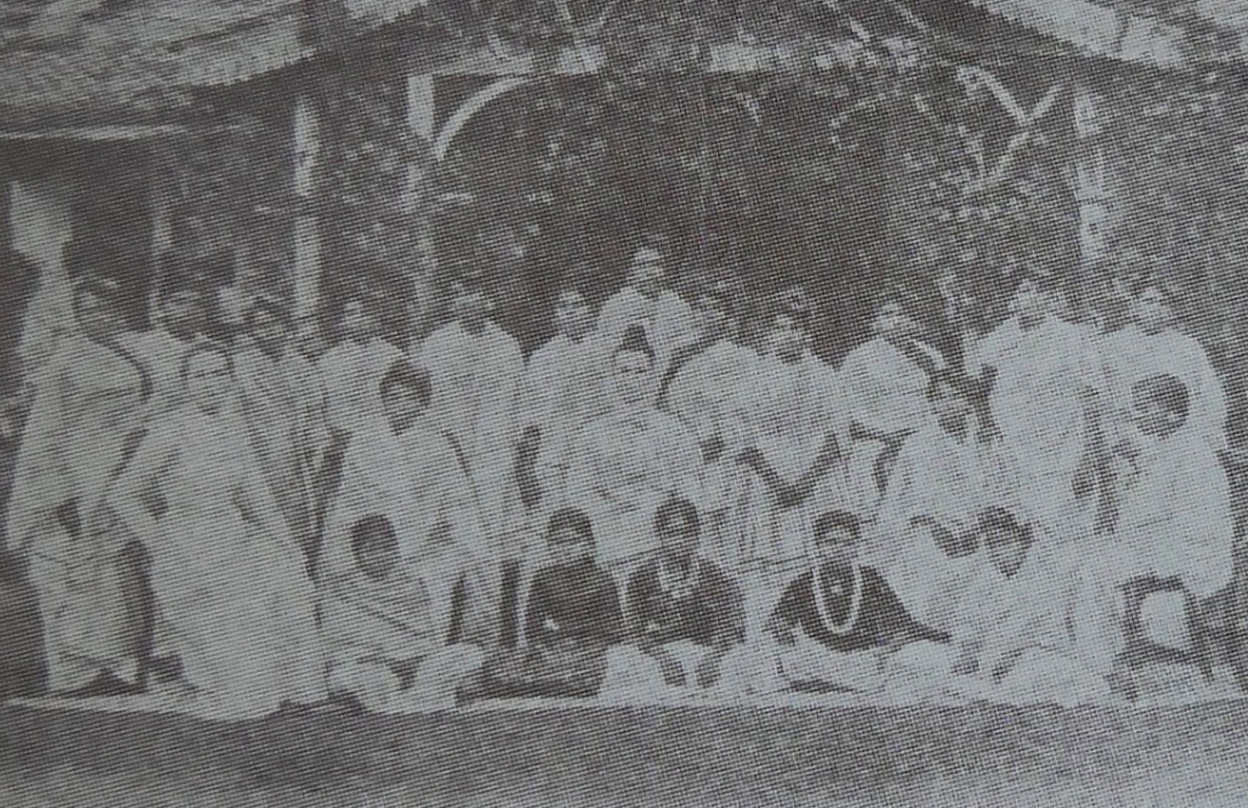
Lower Caste Styles in South Travancore
In the nineteenth century, the London Missionary Society (LMS), Church Missionary Society (CMS), Carmelite Missionaries, Franciscan Missionaries, and the Basel Mission worked in different locations in Kerala with very little overlap. The worldview and aim of each mission were different, as can be seen from the clothes and arrangement of objects in the photographs.

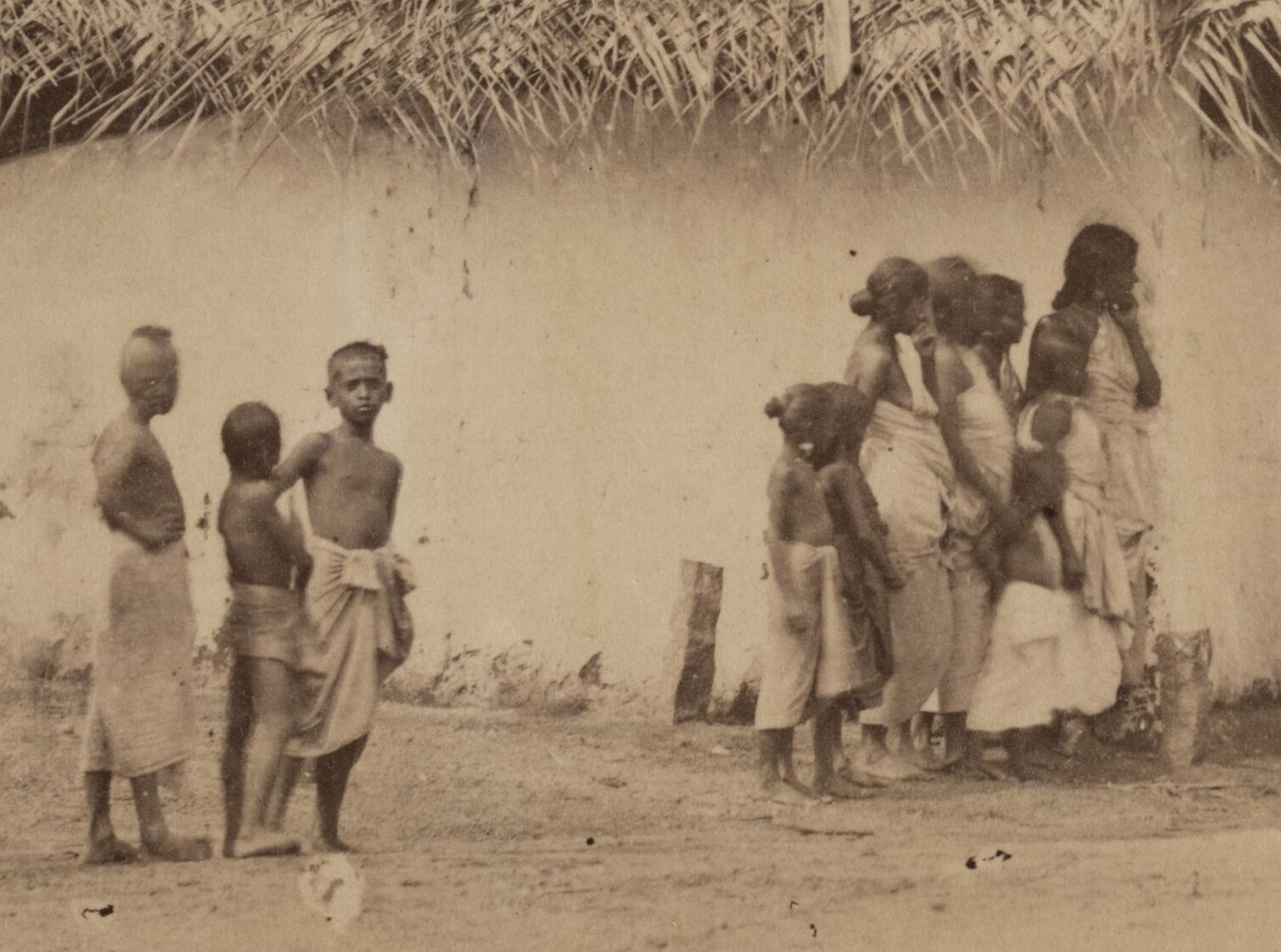
The school in this image is at Eraniel (now in Tamilnadu) and was run by Mrs Ann Thomson from LMS. The students wear indigenous clothes, and the school building is very basic. None of the female students are wearing a blouse or top, and some have not covered the upper part of their body. Though the Breast Cloth movement had given women the right to wear an upper cloth and a jacket, in practice, it was only by the mid-twentieth century that a blouse or top became the norm in Kerala.
Uniforms in Schools
Uniforms have been commonly seen in Basel Mission photographs from Malabar since the turn of the century, especially in those related to domestic tasks and skills. Vocational training, including domestic training, was part of mission education from the nineteenth century. Here, the children are wearing check tops and mundu with stripes at the border.
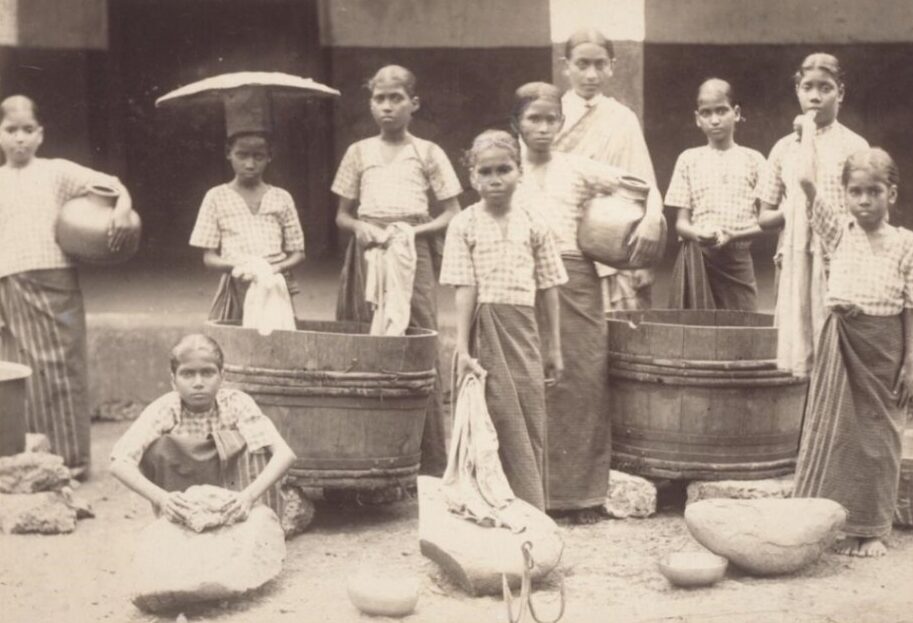
Local Enters the Mission School
Nagercoil was part of the princely state of Travancore during this period. The LMS did not expect the local converts to imitate Western styles and dress. Most of the male children in the following image have no upper clothes, and the older female children are covered in a loosely draped cloth on the upper part of their body, as was customary.
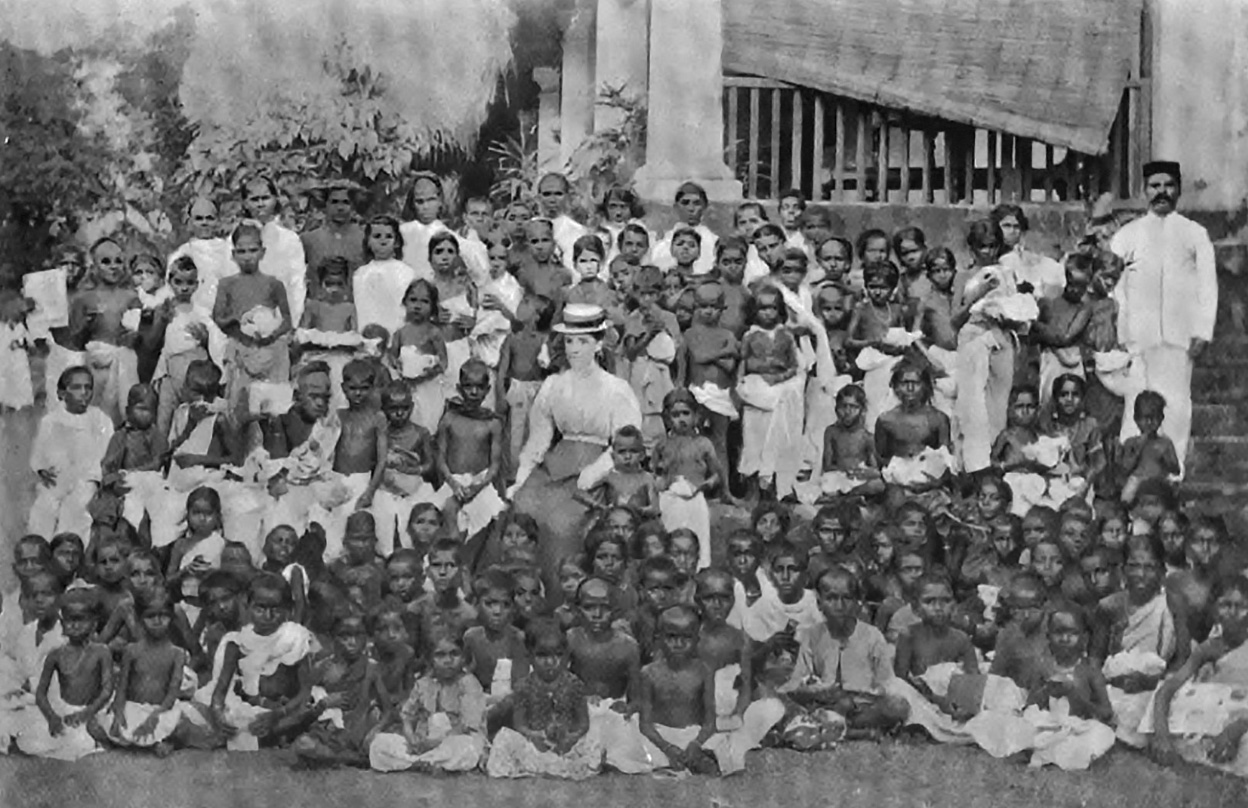
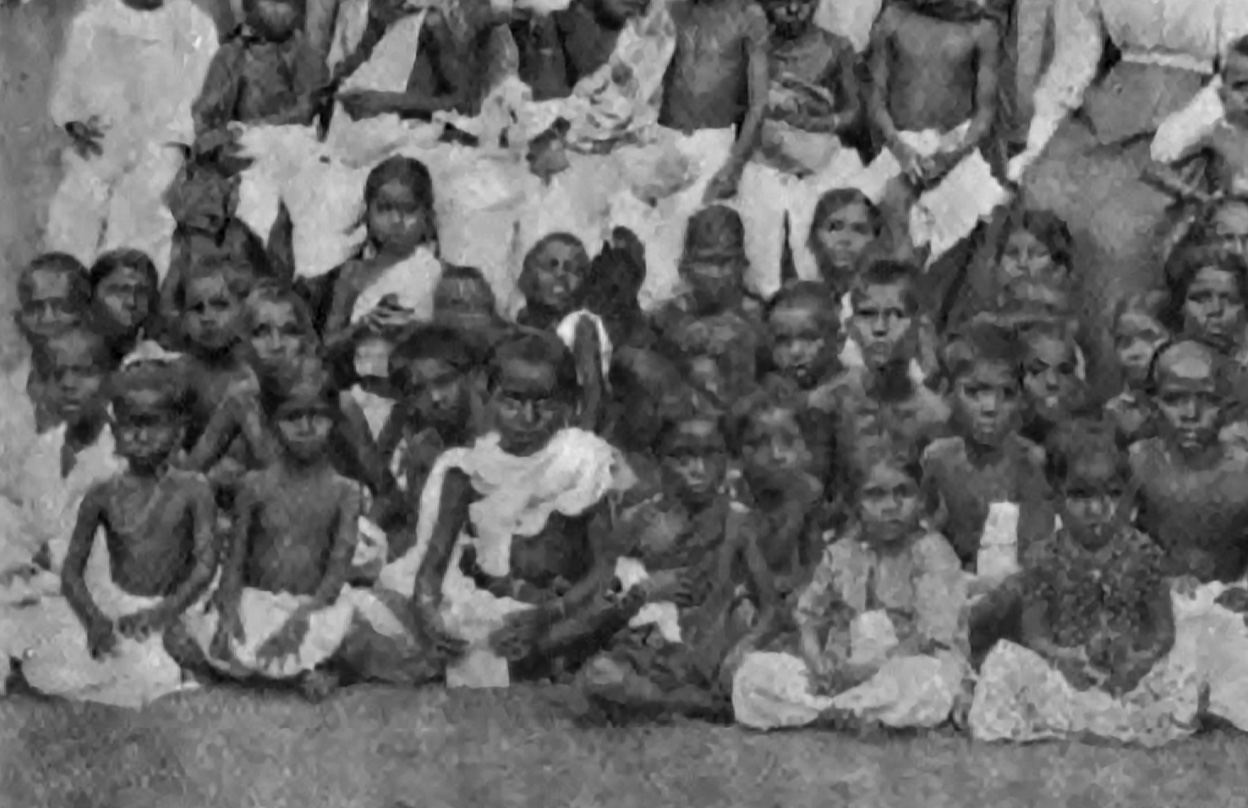
European Influence in Uniforms
Western styles of dress can be seen in uniforms from the period. Basel Mission photos from this period show the students wearing frocks and blouses with ruffles, high collars, and full sleeves in a pattern similar to European women’s dresses and influenced by Western ideas on modesty. Notice that those in sarees are wearing full-sleeved blouses.
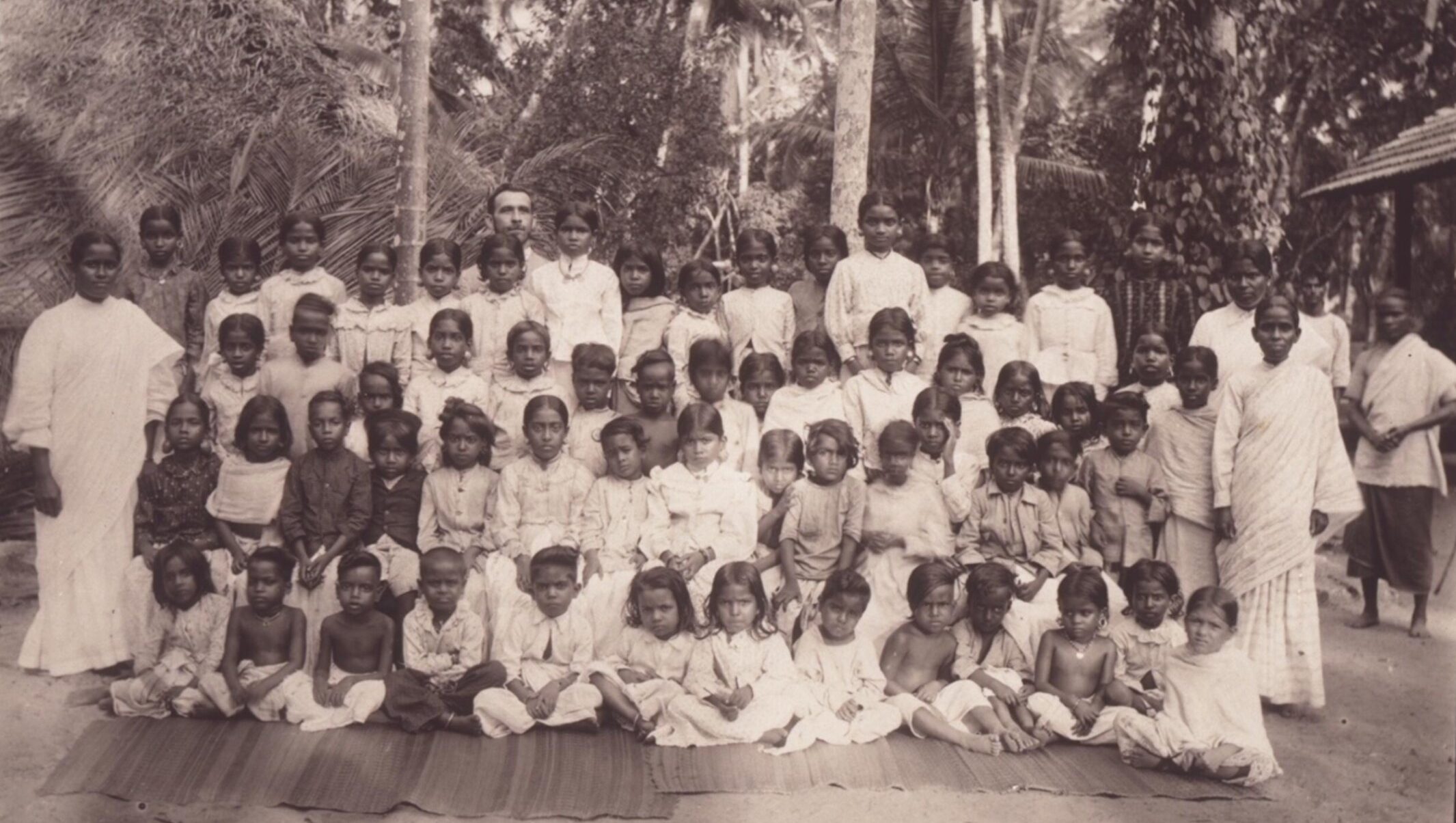
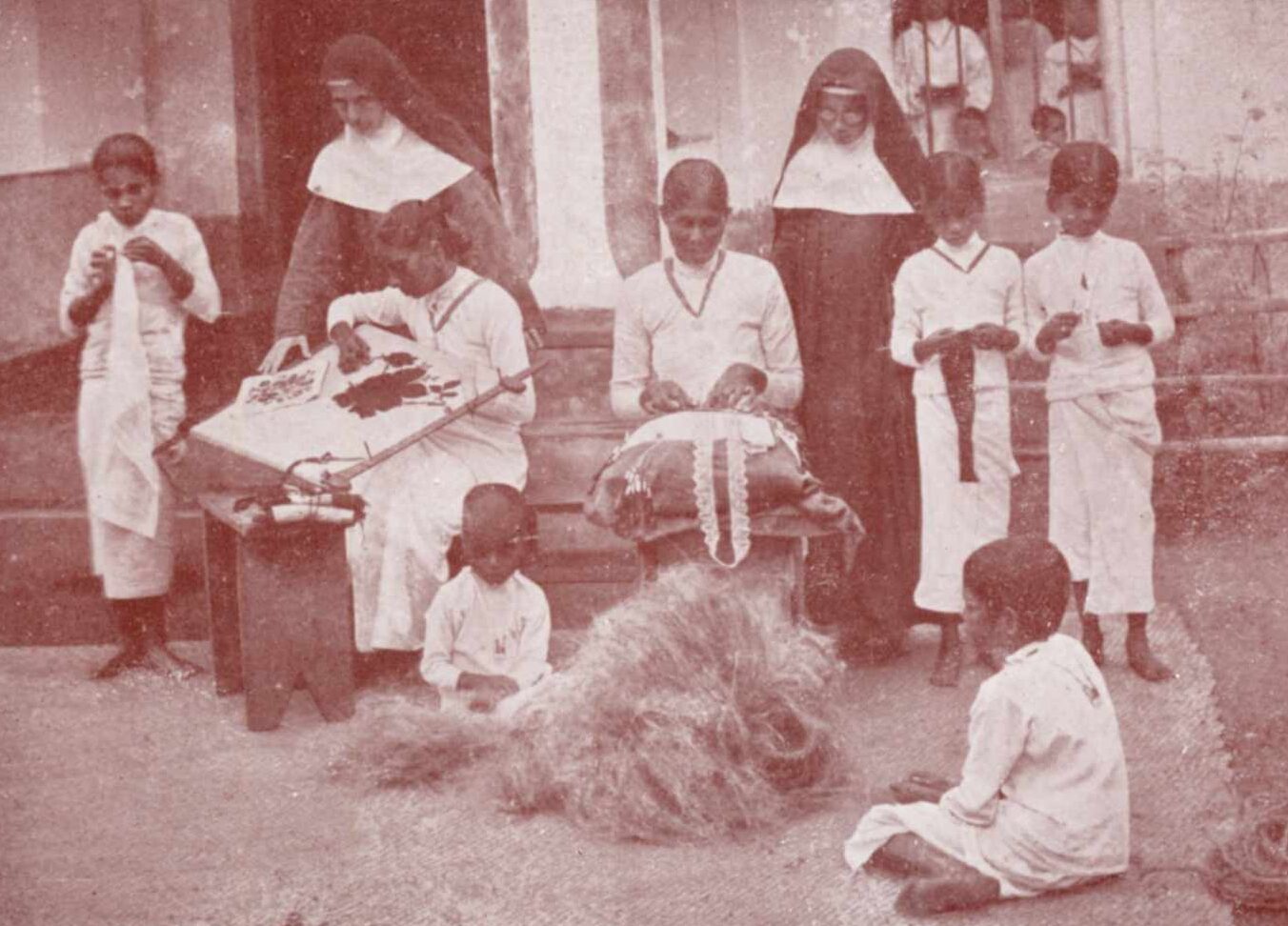
Indigenous Styles Retained
This image is from a postcard printed between 1920–40. In central Kerala, the students in mission schools were mostly drawn from the existing Christian population. The students are wearing the chatta-mundu, the traditional attire of the indigenous Christians in Kerala. Images of mission schools from central Kerala often show the female students wearing the chatta (loose top) and mundu. Syrian Christian women wore the mundu differently—with tiny pleats at the back.
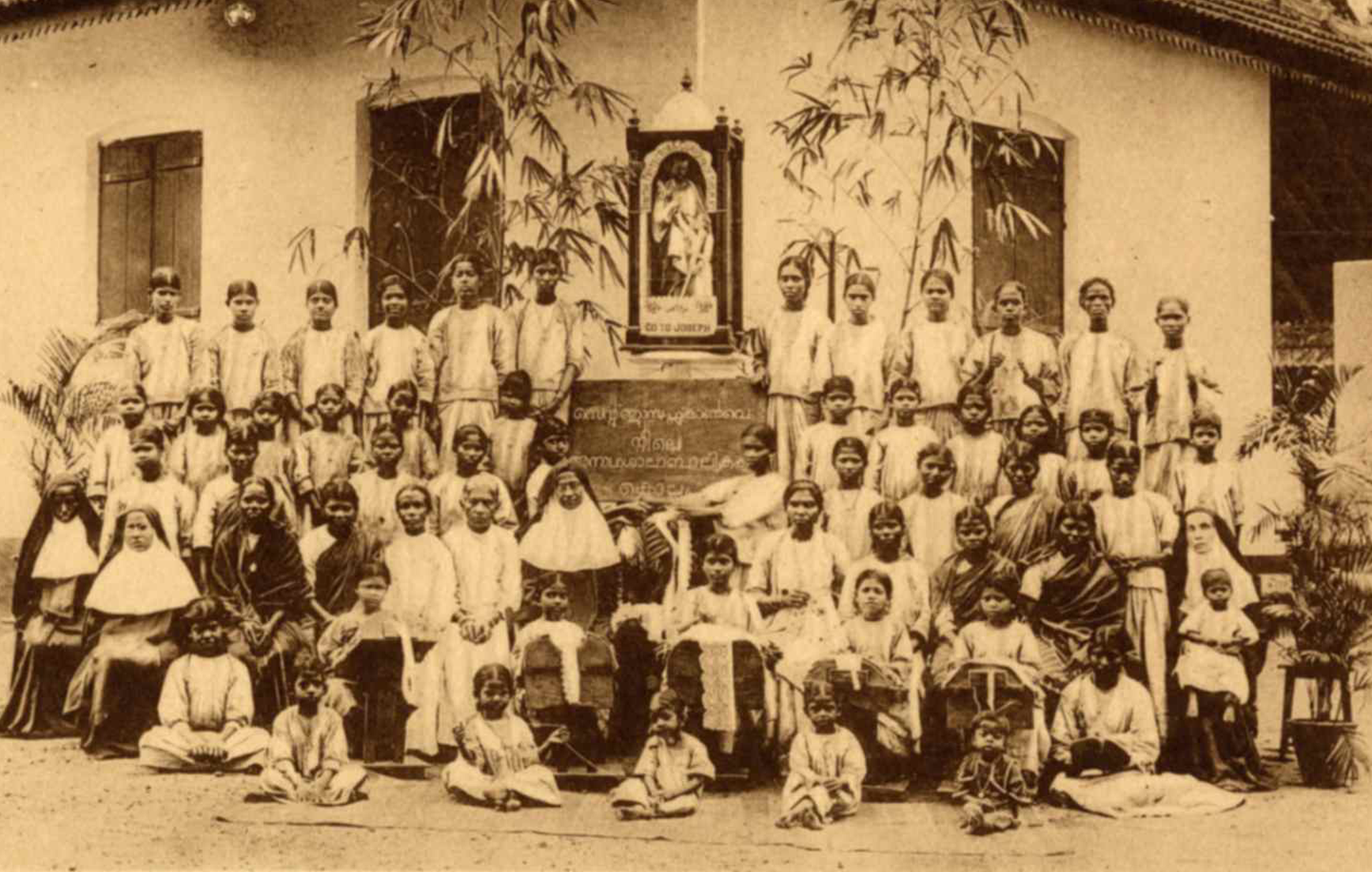
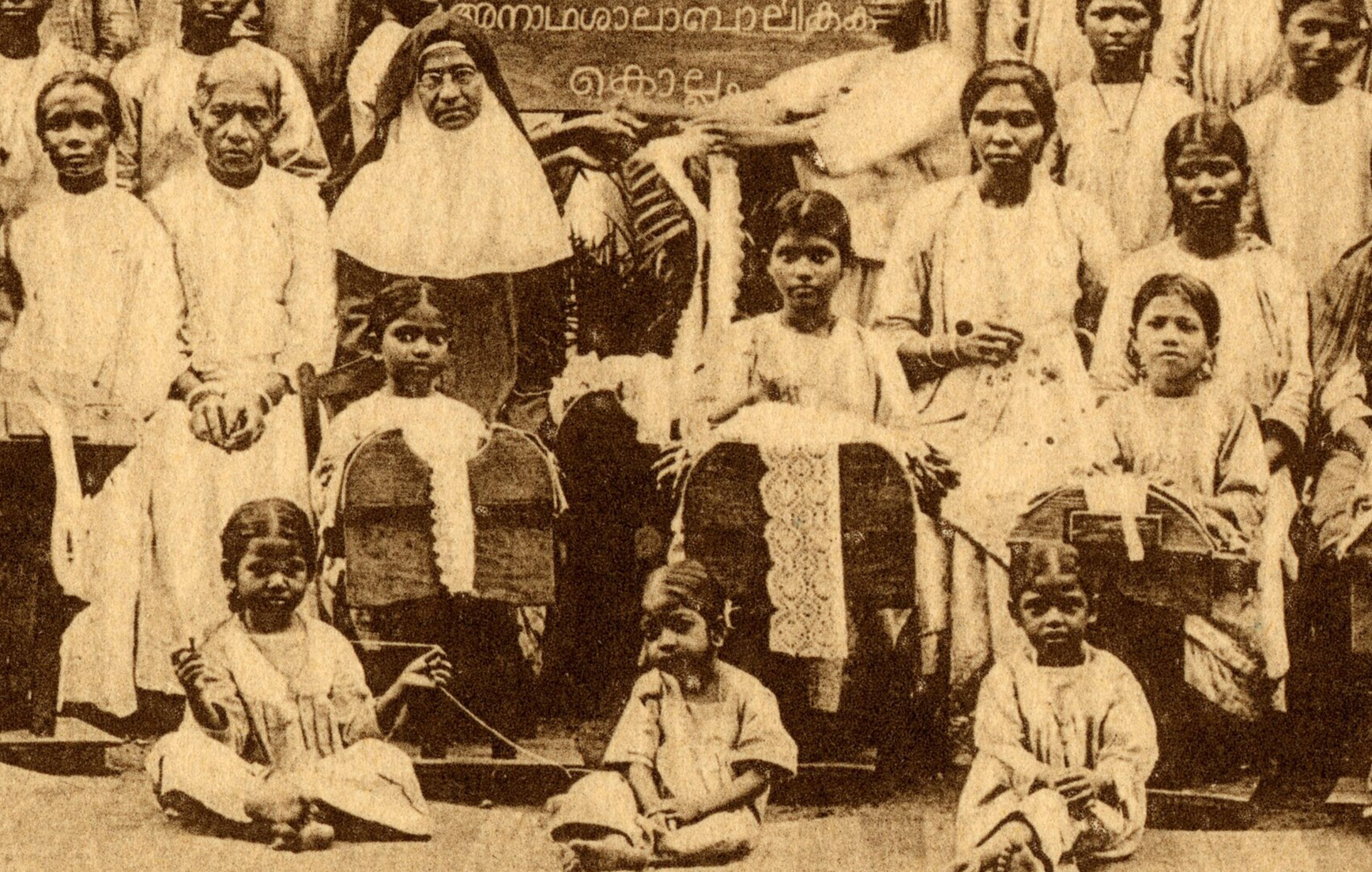
The clothes worn by the students are different from the previous image, and the sarees are darker in shade. In photographs from places with Tamil-speaking populations, women often wear dark-shaded (or coloured) sarees. Some younger girls appear to be wearing pleated skirts with loose tops, while others are in frocks. Most work or skill-related images within missionary archives were from an orphanage or a boarding school.
Kochi, the Fashion Capital of Kerala
Due to the presence of people from various parts of the world and communities with Western ancestry, Kochiites easily embraced Western influence in dressing styles. The traditional chatta-mundu and saree vie with the girls’ frocks, skirts, and blouses and the habits of the Carmelite nuns. The draping of the saree, as shown here and in previous images, was new for the time and popularised by Jnanadanandini Devi, a Tagore daughter-in-law, and the nationalist movement in India.
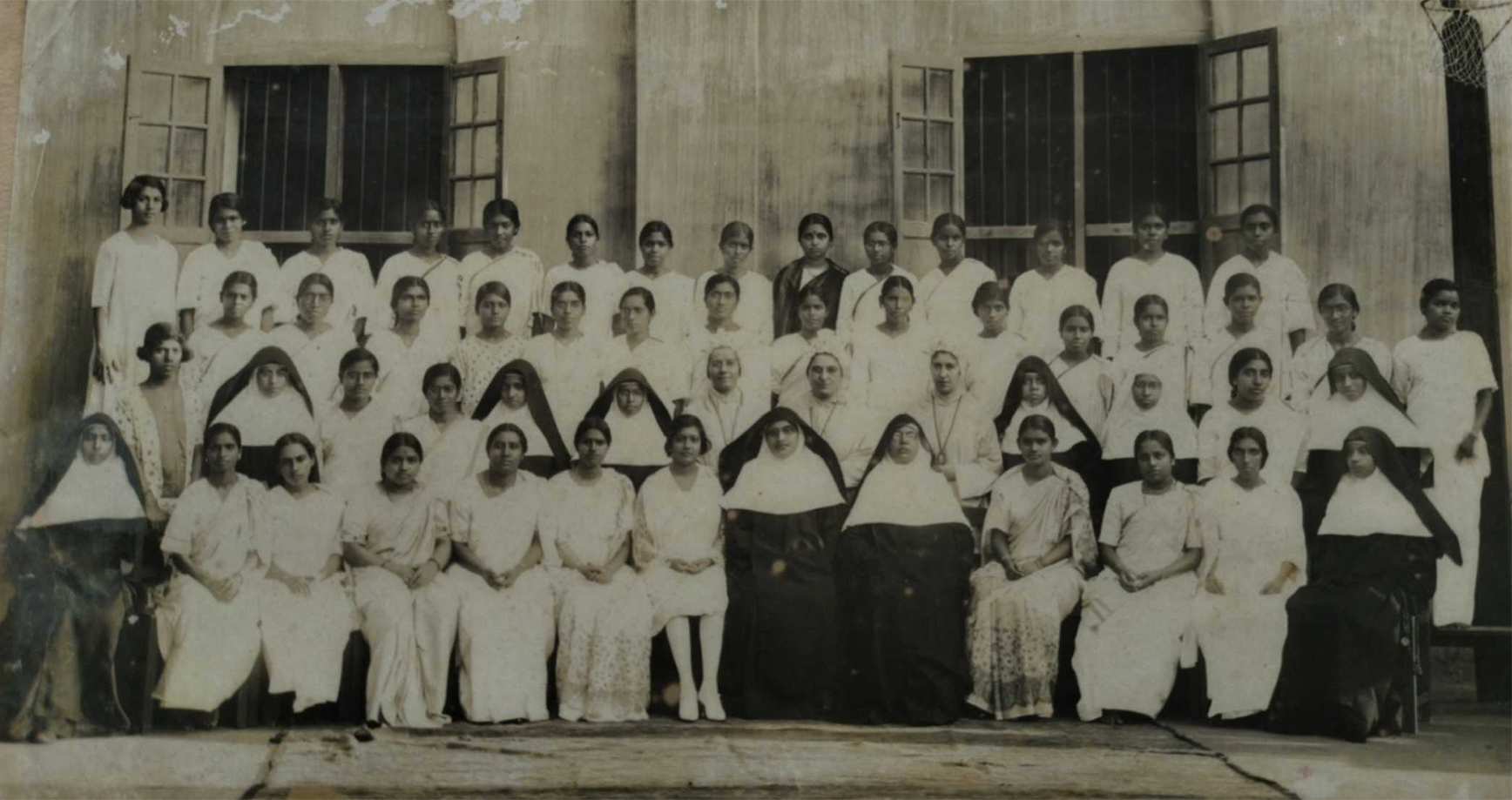

Enter Colours and Prints
This image from Kozhikode of a Basel Mission school shows girls and women wearing sarees, skirts and blouses. The children and teachers appear in indigenous clothes instead of the ruffles and high necks from earlier images. This hand-tinted photographic style was quite popular in the Western world in the early half of the twentieth century.
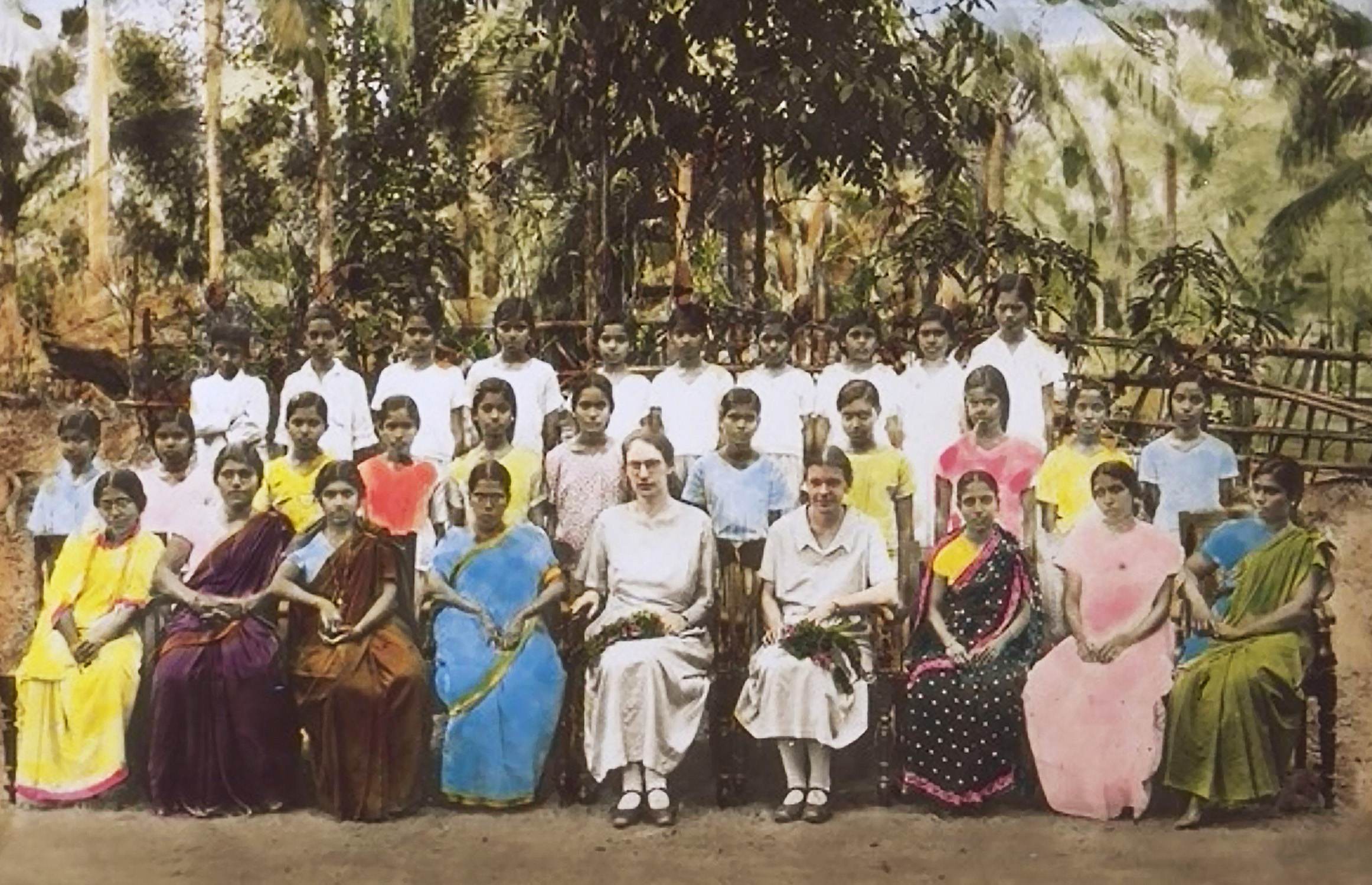

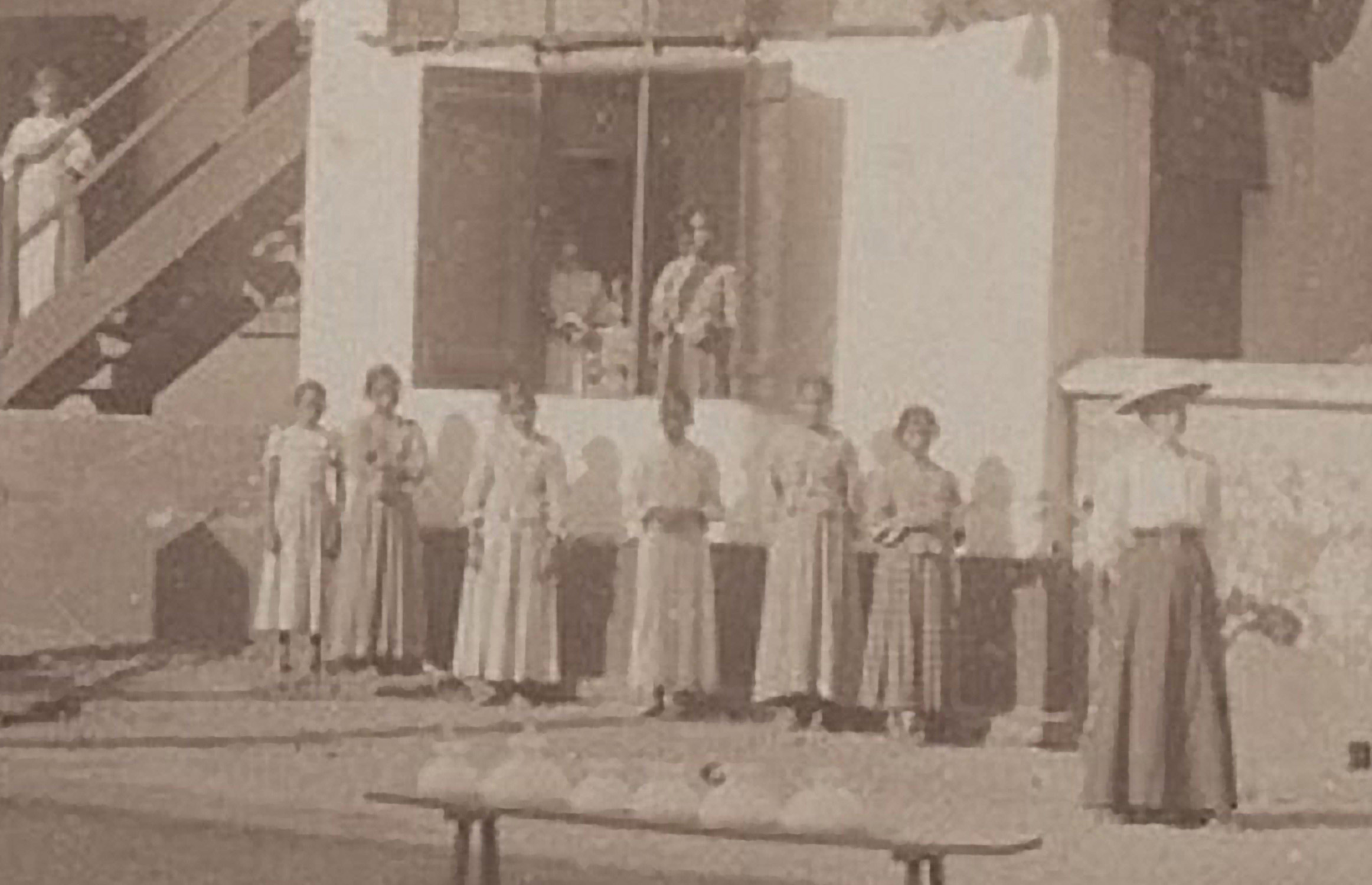
The students wear simple, long dresses or skirts that follow the Western style. The figure on the right is a missionary wearing a blouse, long skirt, and hat. Missionaries had more influence on the children staying with them in boardings and hostels than with day scholars. Many missionary boarding schools were started to remove the children from the influence of their families.
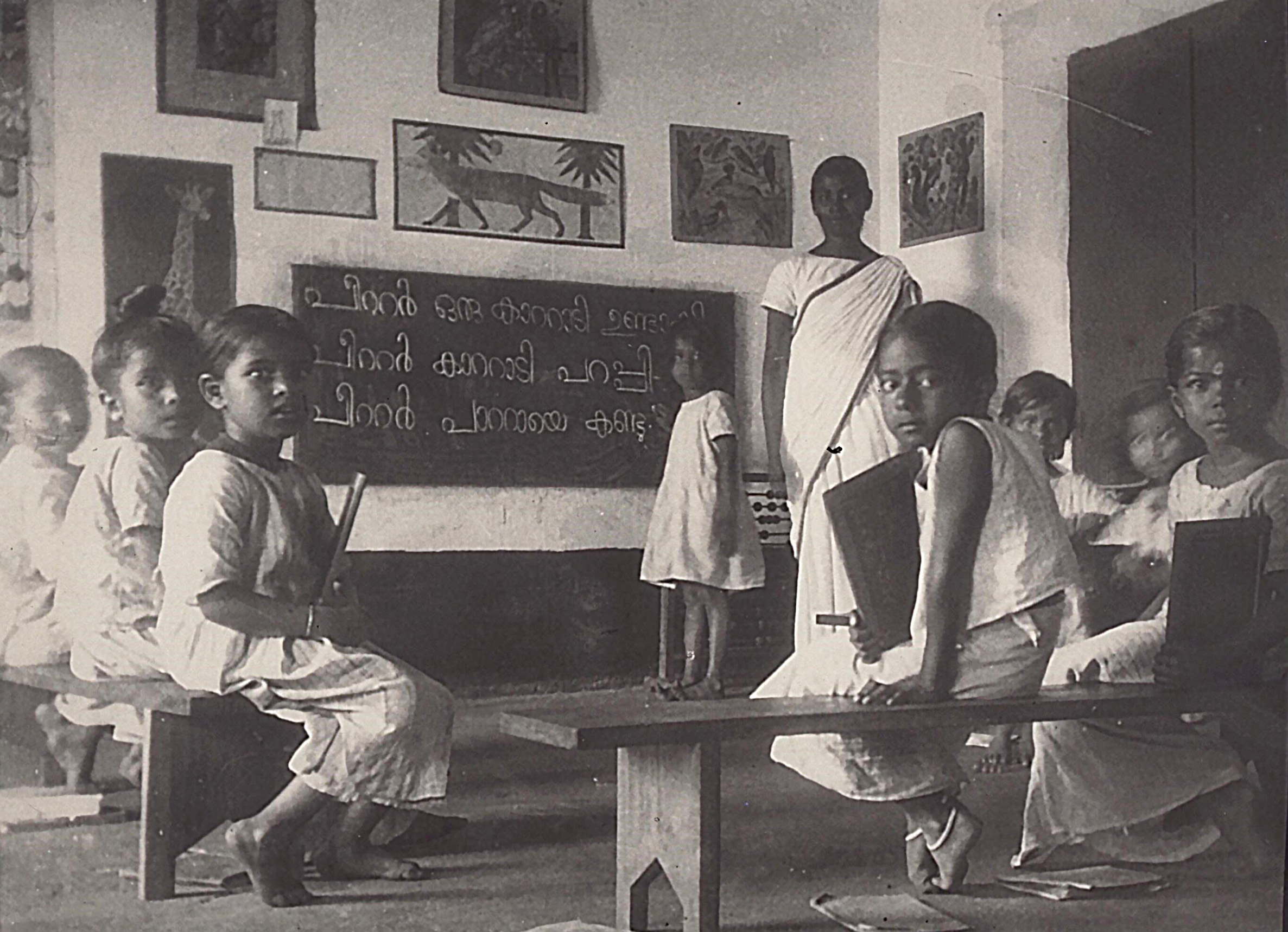
Khadi and Homespun Materials in School Uniforms
The teacher and students appear to be wearing clothes made out of khadi or homespun material.
The photograph is of a primary classroom under the Basel Mission. The class is similar to a modern classroom, except for the absence of desks.
“When Gandhi called for the boycott movement, father took up the call to use khadar (khadi). Khadar used to be very rough then. It’s not fine like now. From when I was born to around 1947, I had worn only khadar clothes. Even the curtains used to be made of khadar. He would take a piece of our uniform to the shop in Chennai to get the colours right. Mother hated wearing it. Women from our community used to wear mundu and chatta. The khadar cloth would feel like sackcloth.”
– Baby Joseph, 91-year-old from Puthenpally, Ernakulam, 2023.

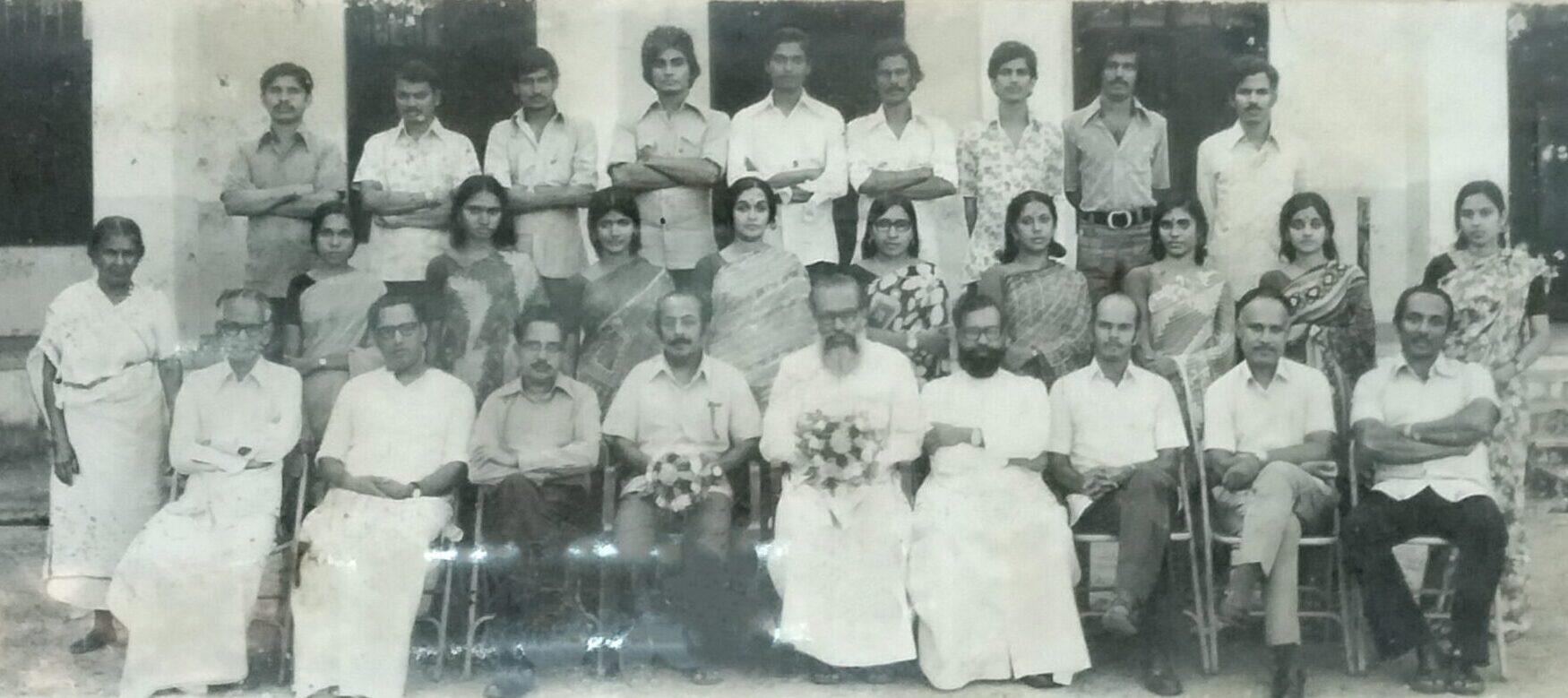
MA English Students, Mar Ivanios College, Thiruvananthapuram. Image: Mar Ivanios College, 1977-78
The clothes worn by the women are more festive, with bold prints compared to previous decades. This was also due to the increased availability of factory-made clothes.
“I have heard my mother and aunts speak about the foreign saree. It was very famous at that time. It was probably made of rayon or nylon and easy to wash and wear. Whenever people used to come from places like Singapore, they brought foreign sarees. They were very soft to the touch and flowy. They were not made in India then.”
– Supriya, Fashion Technology teacher, St. Teresa’s College, Ernakulam, 2023.
Government Schools
The girls’ skirts were short, either up to the knees or above it, during this period. In later years, the length of skirts became longer in many schools.
“The length of the skirts was directly related to the cloth availability. In the 1960s and 1970s, dress material was in short supply for common people. It was considered shameful if the short skirt was long. Even if the skirt was stitched to be longer, the girls used to fold it at the waist to maintain the length. Once the availability of cloth increased, the length of students’ uniform skirts also increased. From an earlier era when short skirts were the acceptable style, maxi skirts became the norm by the 1980s and 90s.”
– Suja K., 58-year-old housewife, Thrissur, 2023.

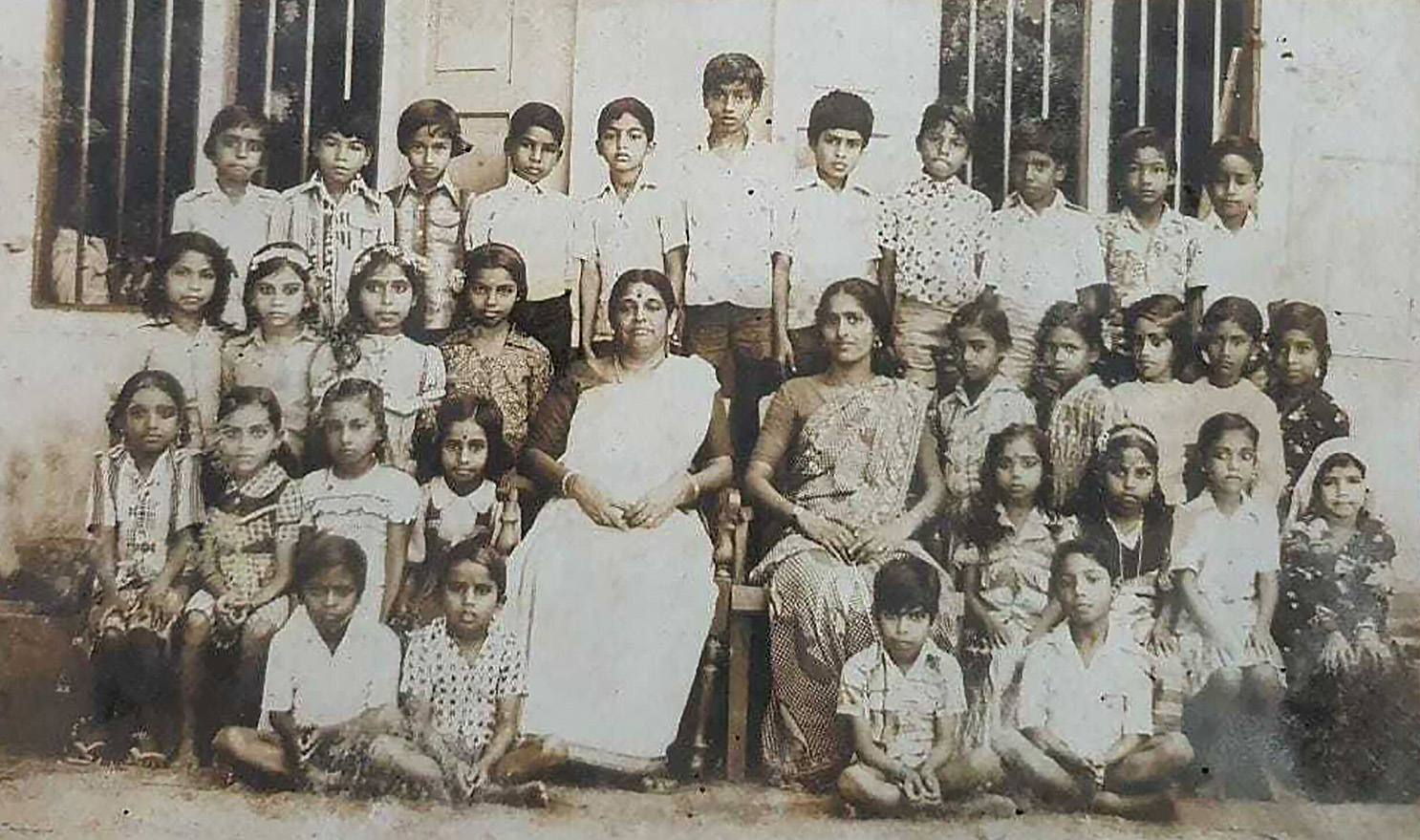
Many government schools did not have uniforms for the students until fairly recently.
“There were no uniforms in the government school where I studied in the 1970s. The girls used to wear pretty petticoat skirts beneath the maxi skirts that came a little above the ankles. Showing off the petticoats was something that every girl did. My family could not afford the long petticoat, so I wore a frock-like petticoat that was not very long. Slippers were not commonly worn in our village.”
– Suja K., a housewife, remembering her village school, Thrissur
“In government schools and certain schools in rural areas in the 2010s, the school authorities would bring a particular uniform style. However, it did not mean that the students would follow it either because they could not afford it or did not care for the style.”
– Saro Krishna, Ernakulam, 2023.
Private Aided Schools
Missionary schools had formal uniforms for boys by the mid-1960s and 70s.
“I did not have any uniform in the lower primary school in the 1960s. In the upper primary, the school uniform was a blue shirt and shorts. Once I grew tall, a teacher suggested that I wear mundu, and I switched to the uniform shirt and mundu.”
– Unnikrishnan K., Thrissur, 2023.
According to Unnikrishnan, the change in uniform had more to do with convenience and keeping with what most people wore in that location.
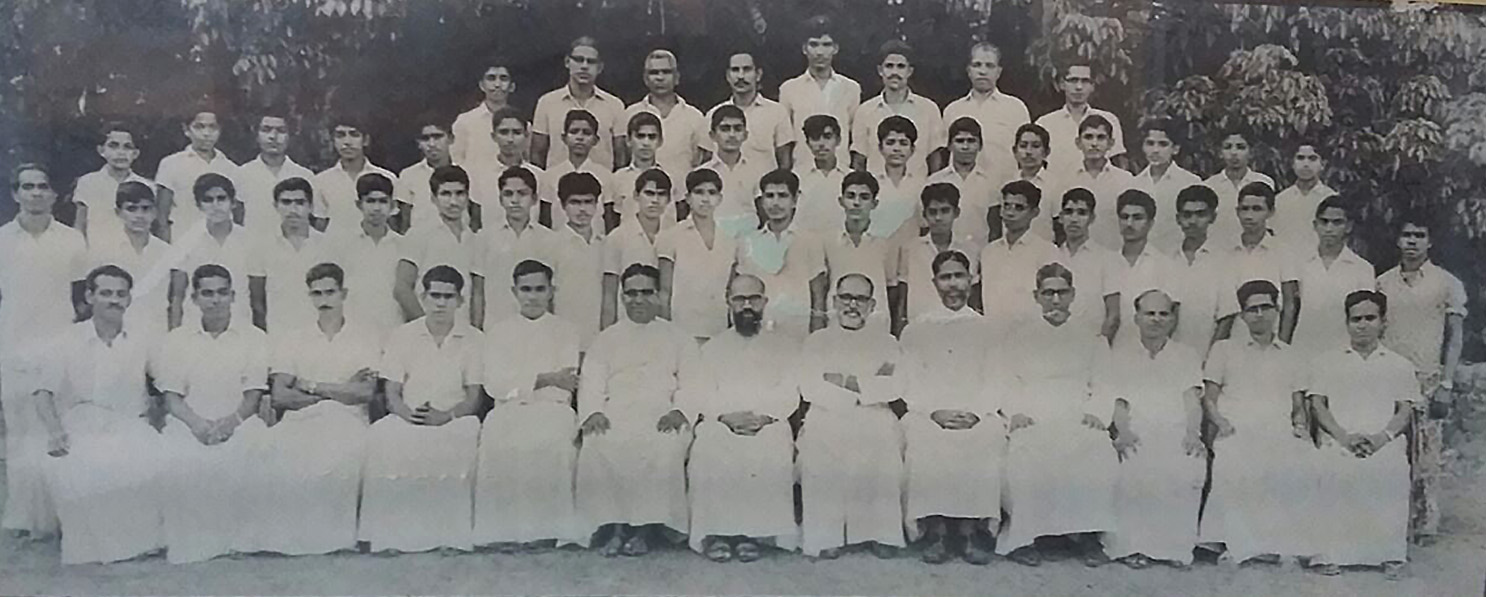
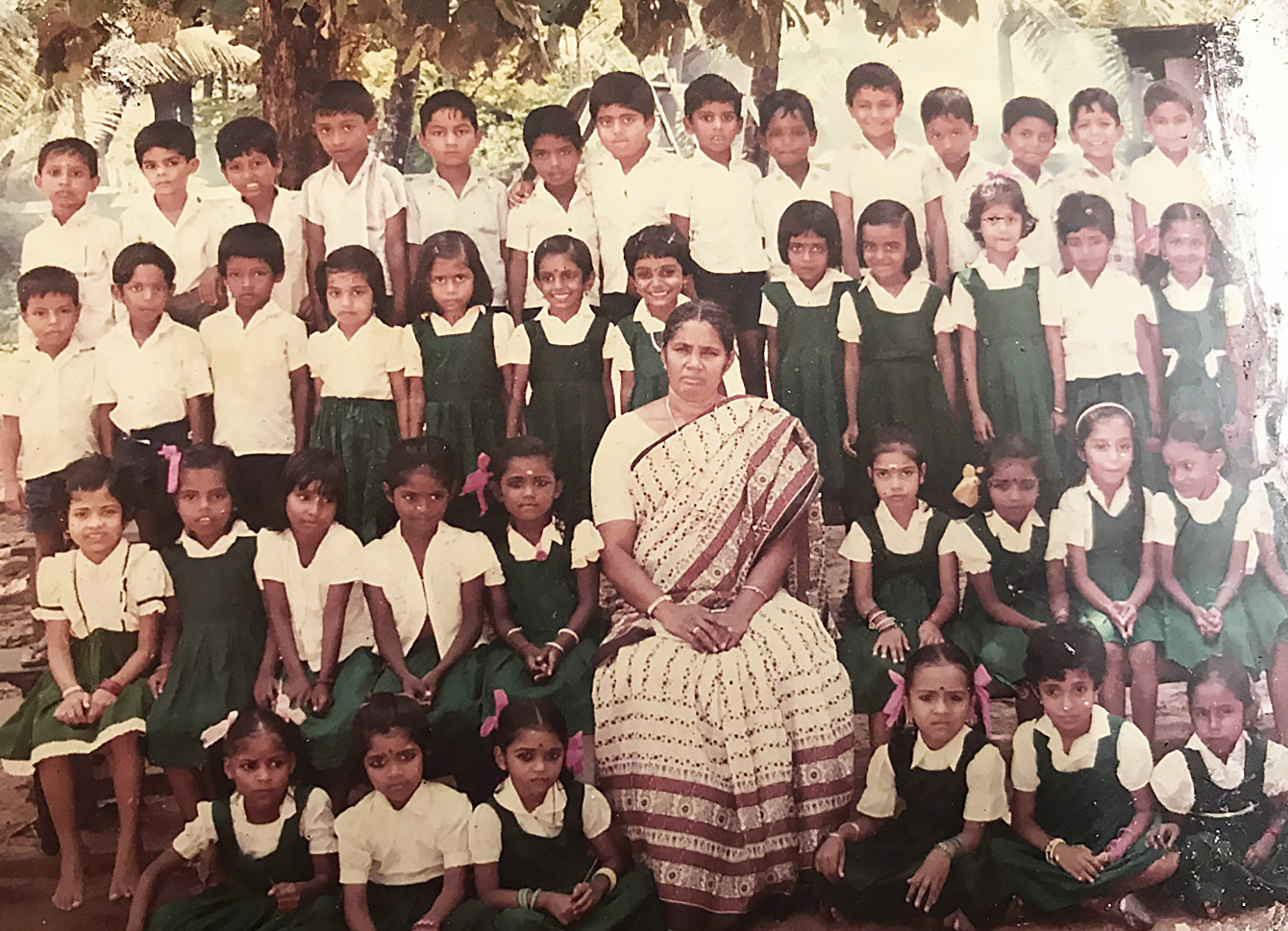

Checks, Plaids, and Patterns
From plain, solid-coloured shirts, blouses, and kameezes, uniforms moved to checked patterns in many institutions in the 1990s.
“Cotton is a good fabric for our weather. In uniforms, we cannot use pure cotton; terry cotton (cotton and polyester mix) is used because of the requirements of being easy to wash, dry, and iron.”
– Supriya, Fashion Technology teacher, Ernakulam, 2023.
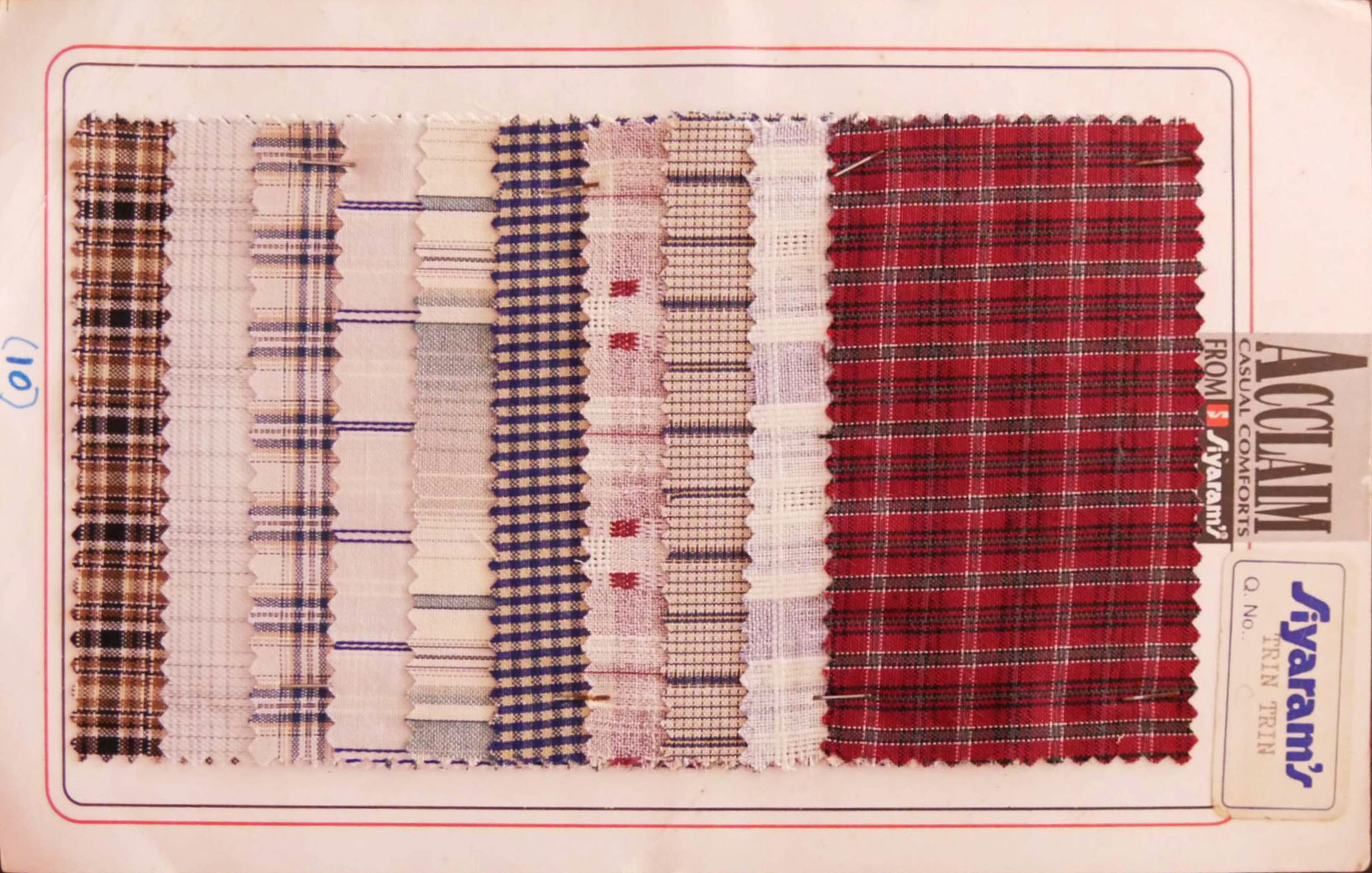
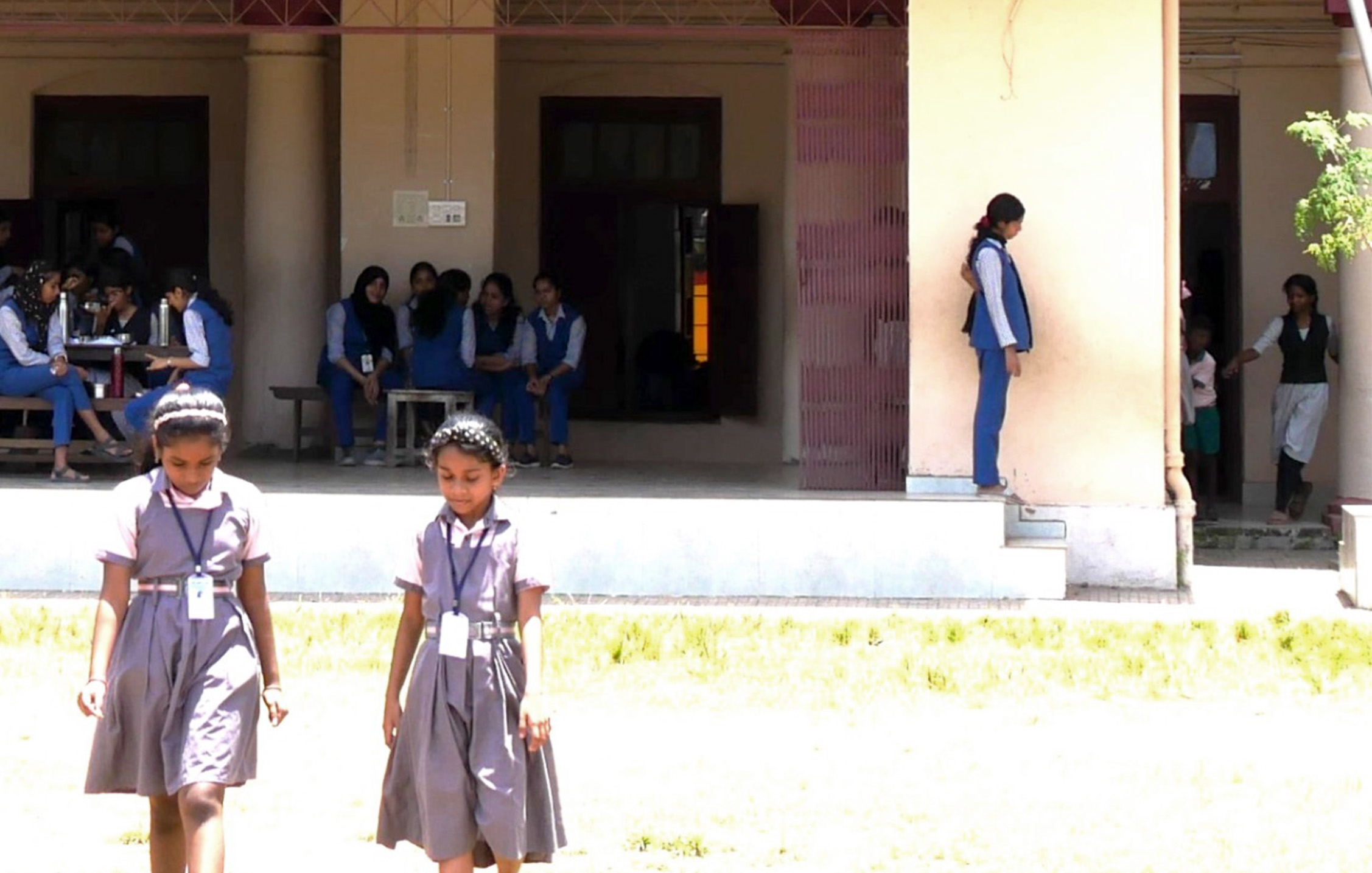
Multiple Uniforms
Currently, schools have students wearing various uniforms depending on their age and grade. Students wearing pinafores can be seen in the foreground. Students in the background are wearing pants, waistcoats, and shirts or salwar kameezes with waistcoats.
Accomodating Religious Practice
Female students wear salwar kameezes with a dupatta, and Muslim students wear white head scarves. In schools with a high percentage of Muslim students, the headscarf is part of the uniform.
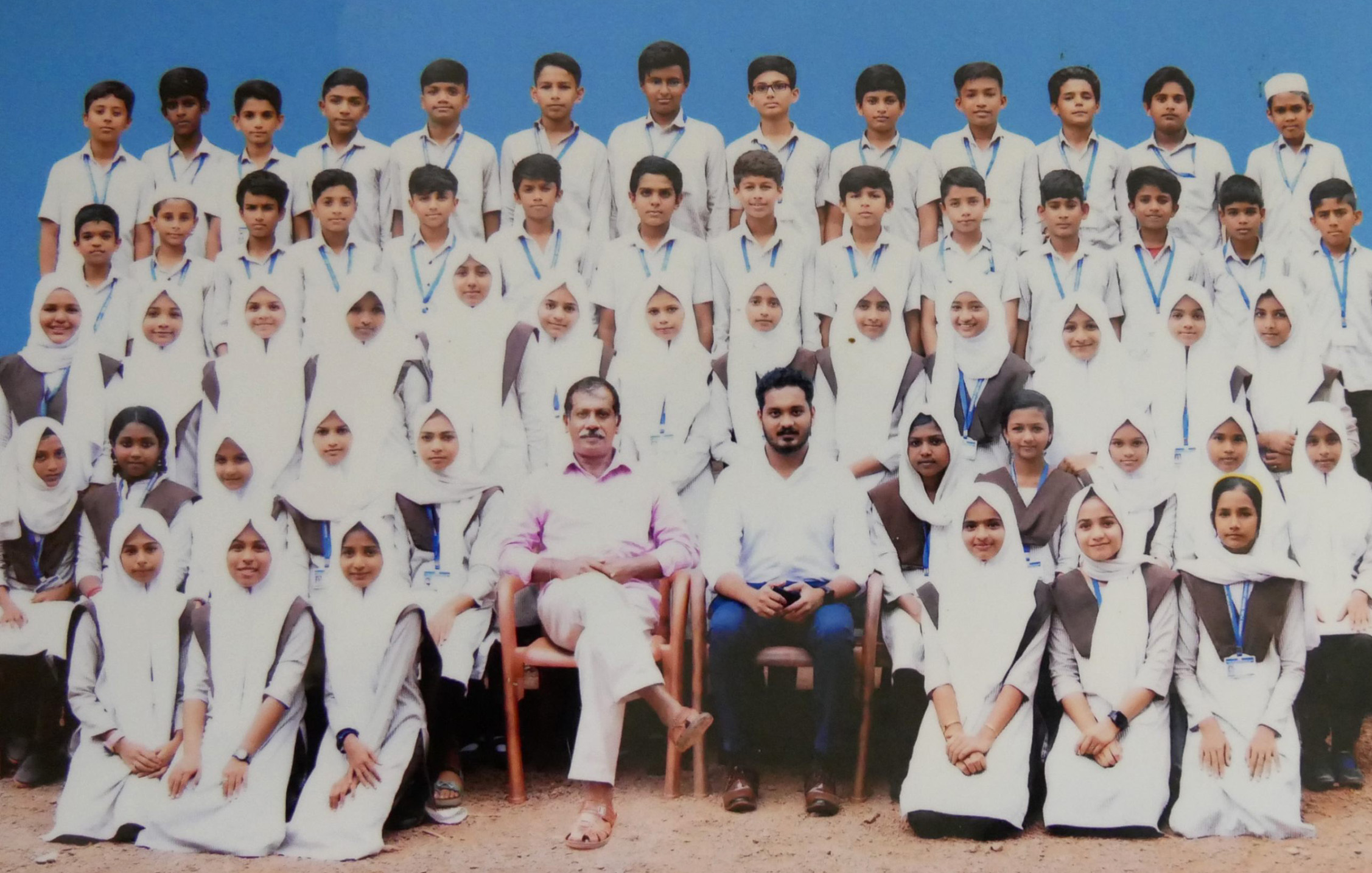
Events and Occasions
The First Holy Communion is the celebration of a sacrament specific to Catholic Communities. First, Holy Communions are organised by parishes and parents, not schools, because religious instruction has been removed from Christian educational institutions and taken up by communities due to several governmental policies in the twentieth century.
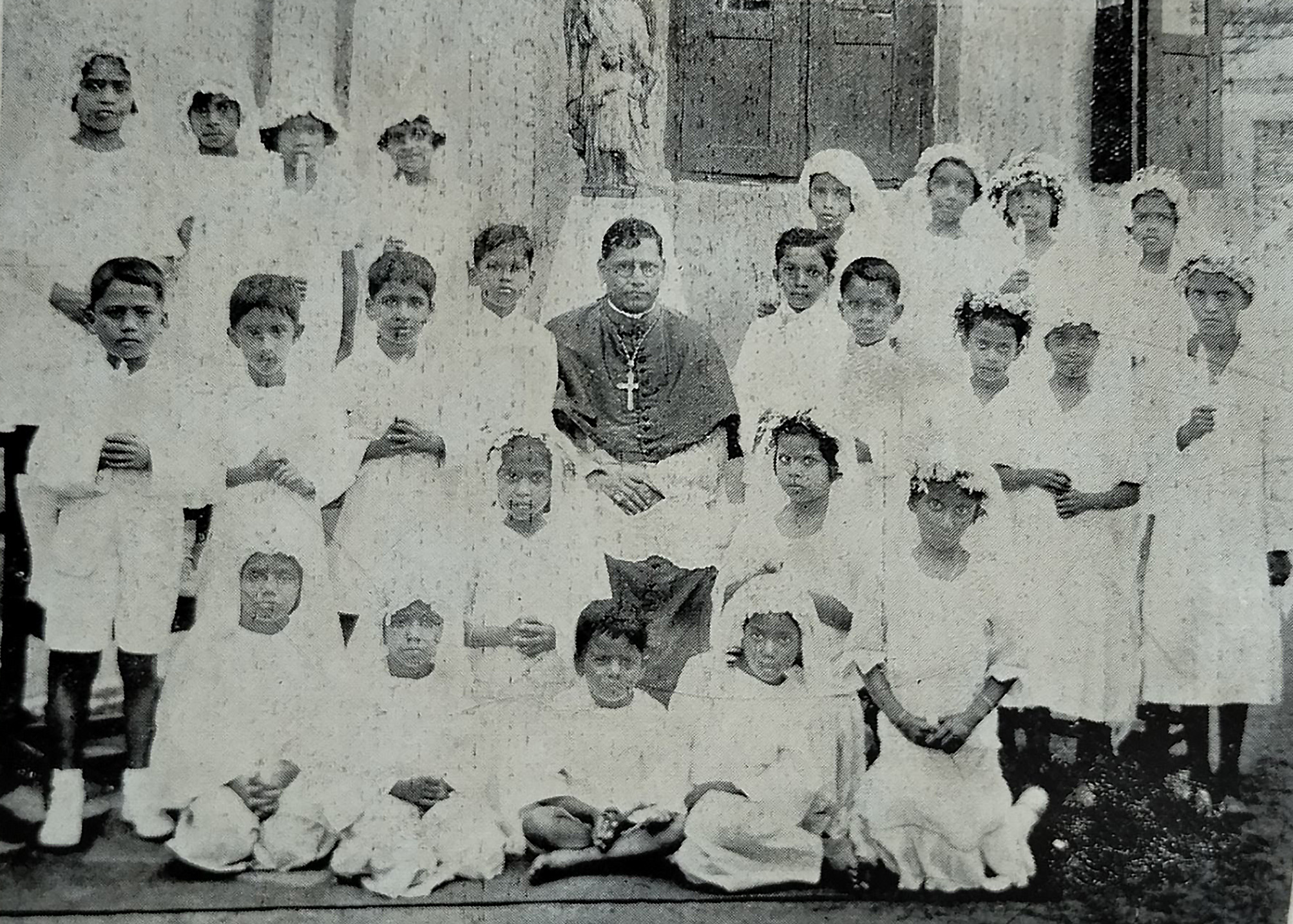

Graduation Gowns
Towards the mid-century, graduation gowns made an appearance in the annuals of St. Teresa’s College. The picture has been taken in a studio.
Concurrent Nationalisms
The students are showcasing a variety of costumes worn by different communities in Kerala. The performance highlights Maharaja and Queen Consort’s importance in colonial Cochin. The performance seen in this photograph was to felicitate the Consort on being awarded a Thanks badge by the All India Girl Guides Association.

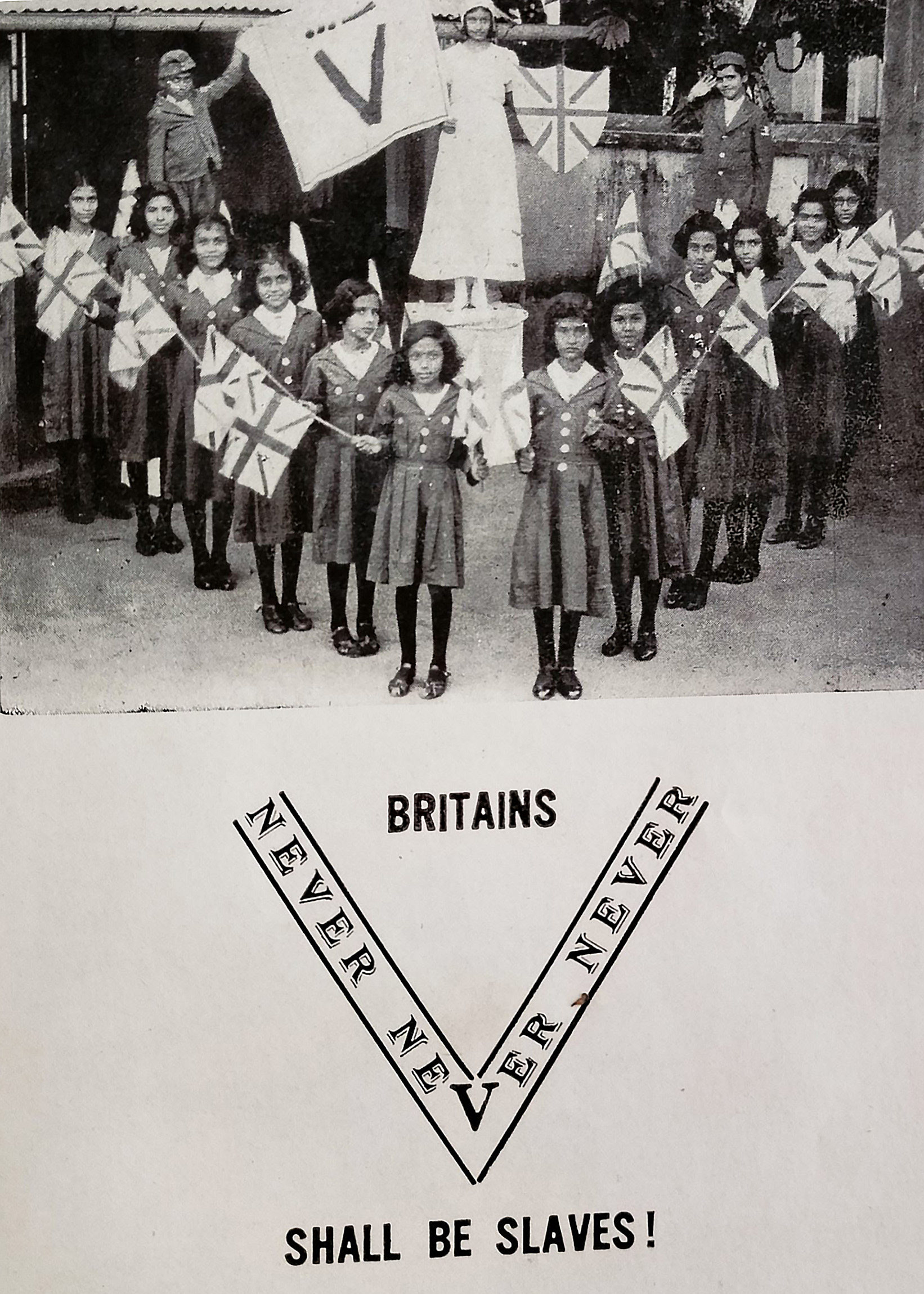
St. Teresa’s school and college, located in the princely state of Cochin, and in close contact with British Cochin (which later became known as Fort Kochi), had mixed loyalties. This photo is from the initial years of World War II. The Carmelites that ran the institution were a British Evangelical Catholic mission. In the same annual, there was a photo of the King of Cochin.
The image of Mother India with her arm out and superimposed on the India map had been circulated from the early twentieth century and even earlier in Bengal. It was part of a larger discourse on nationalism. Missionary educational institutions of the period present an easy movement between patriotism to the State, Nation, and British authority.
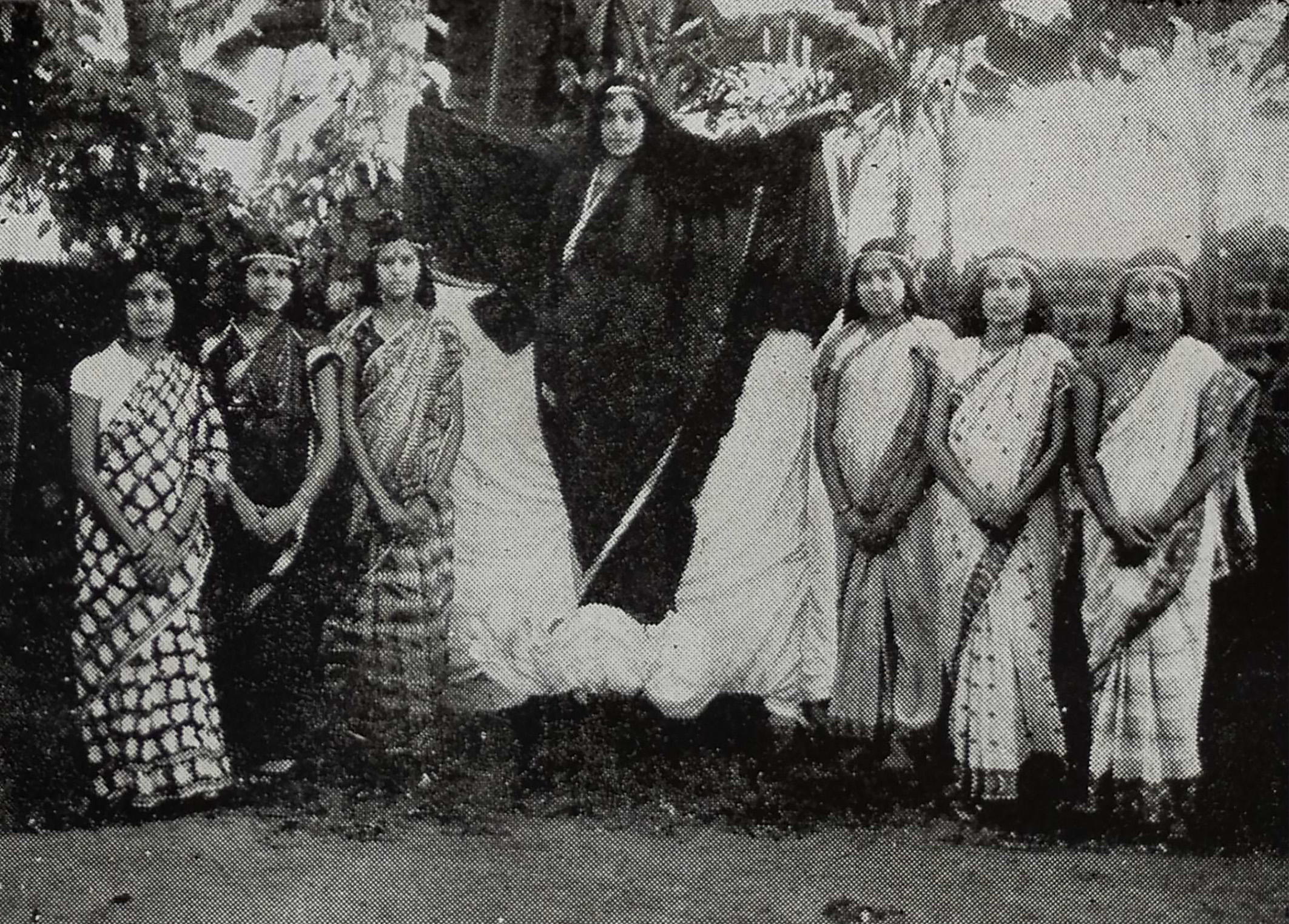

European Pageantry
This sense of pageantry and joie de vivre found in the Carmelite institutional photographs from the early to mid-twentieth century is rarely found in the other missions, a reflection of the difference in the worldview of the Catholic and Protestant missions.
Sports Attire
Schools started to switch to a sports uniform that was all white sometime in the past.
“When uniforms were white, it was very difficult to keep them clean. On Wednesdays, we had PT period, and everyone’s uniform would be shades of brown. Cleaning the white shoes was quite a struggle. White shoes retain stains, and we are pulled up and punished during assembly.
Sometimes, we were required to wear the full uniform with the shoes for functions. If it were a rainy day, that would be difficult. Later, the parents raised these issues during parent-teacher meetings and some of these rules regarding uniforms were changed.”
– Sreelakshmi, a student in BA History, 2023.
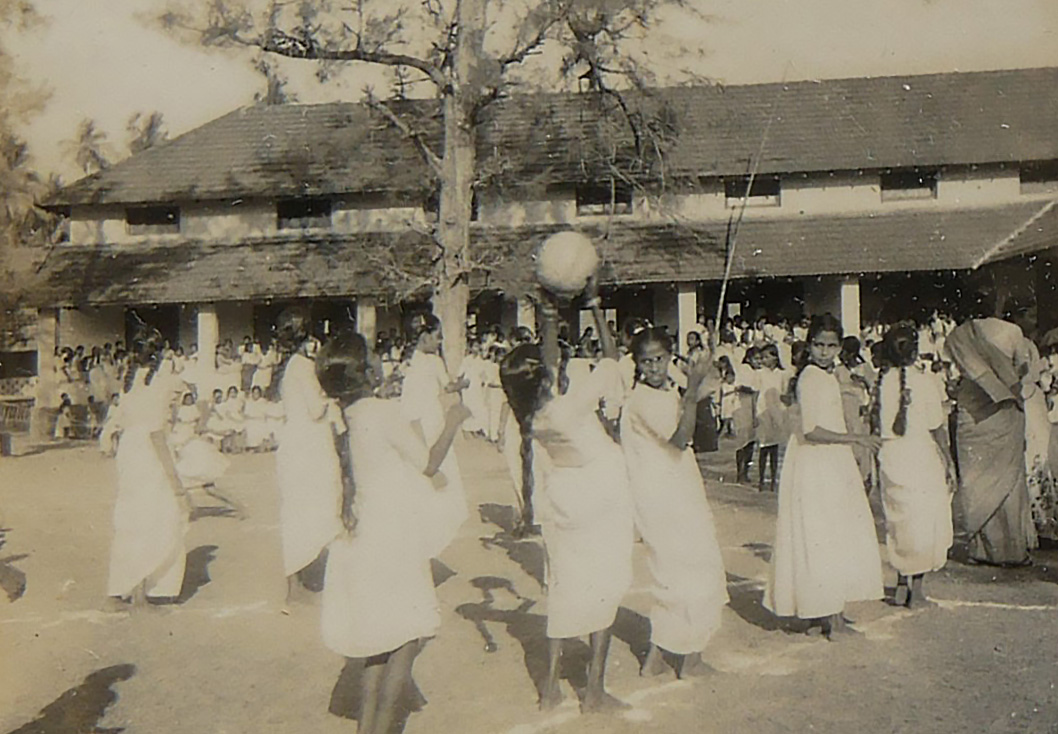
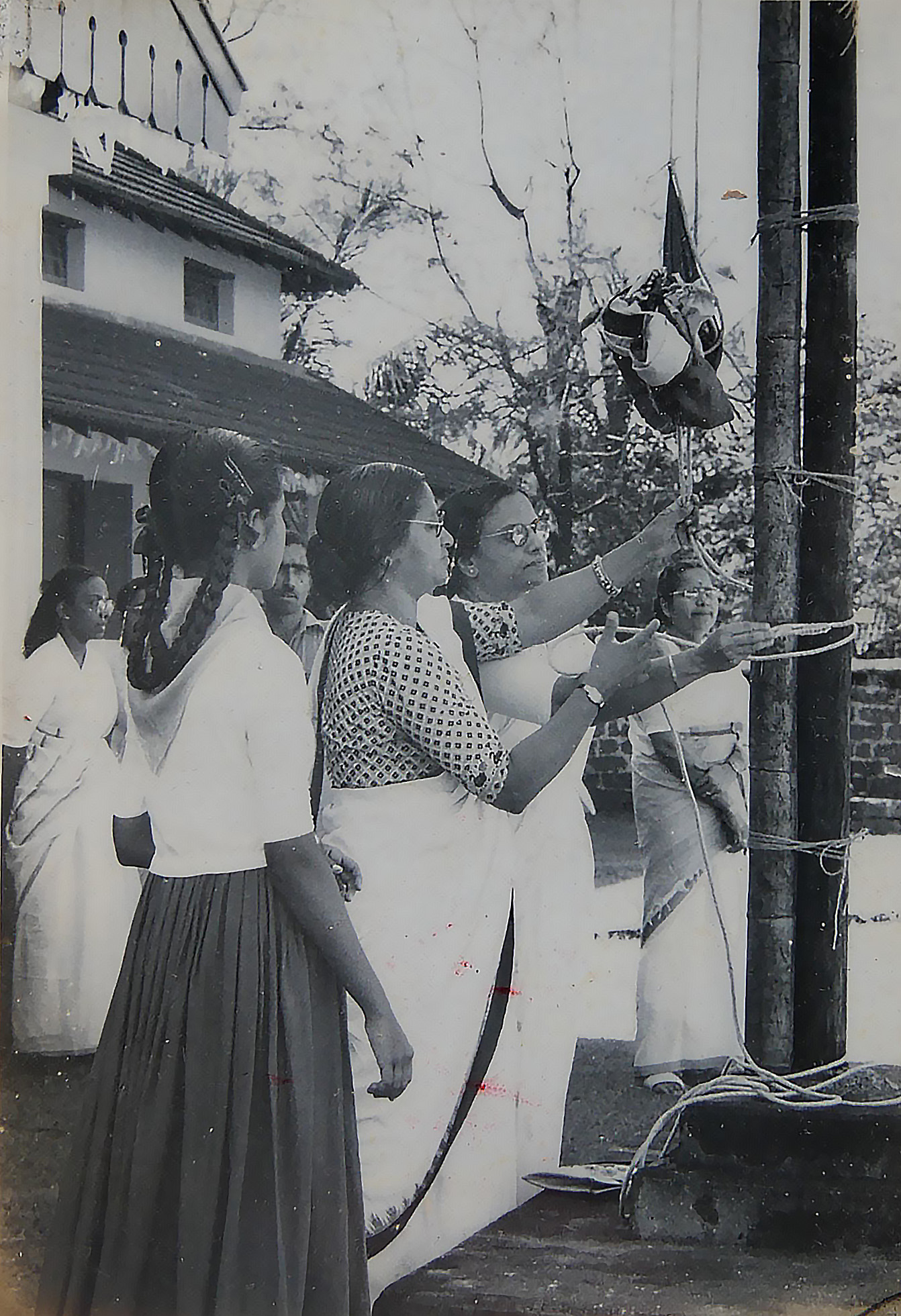
Independence Day Celebrations
Independence Day was a school holiday in the 1950s, but students attended the flag-hoisting ceremony.
The school captain, seen here with the chief guest, is in a solid colour uniform and double plaits. Most schools in Kerala used to insist that female students with long hair plait it on both sides. This was changed only in 2016 when a Plus Two student from Kasaragod filed a complaint with the government, and the rules were amended to instruct school authorities not to force female students to plait their hair.
School Band Uniforms Remain Unchanged
The girls are in a typical band uniform with short plaid skirts, plain shirts, ties, shoes, and socks. Slightly longer skirts at present have replaced the short plaid skirts.
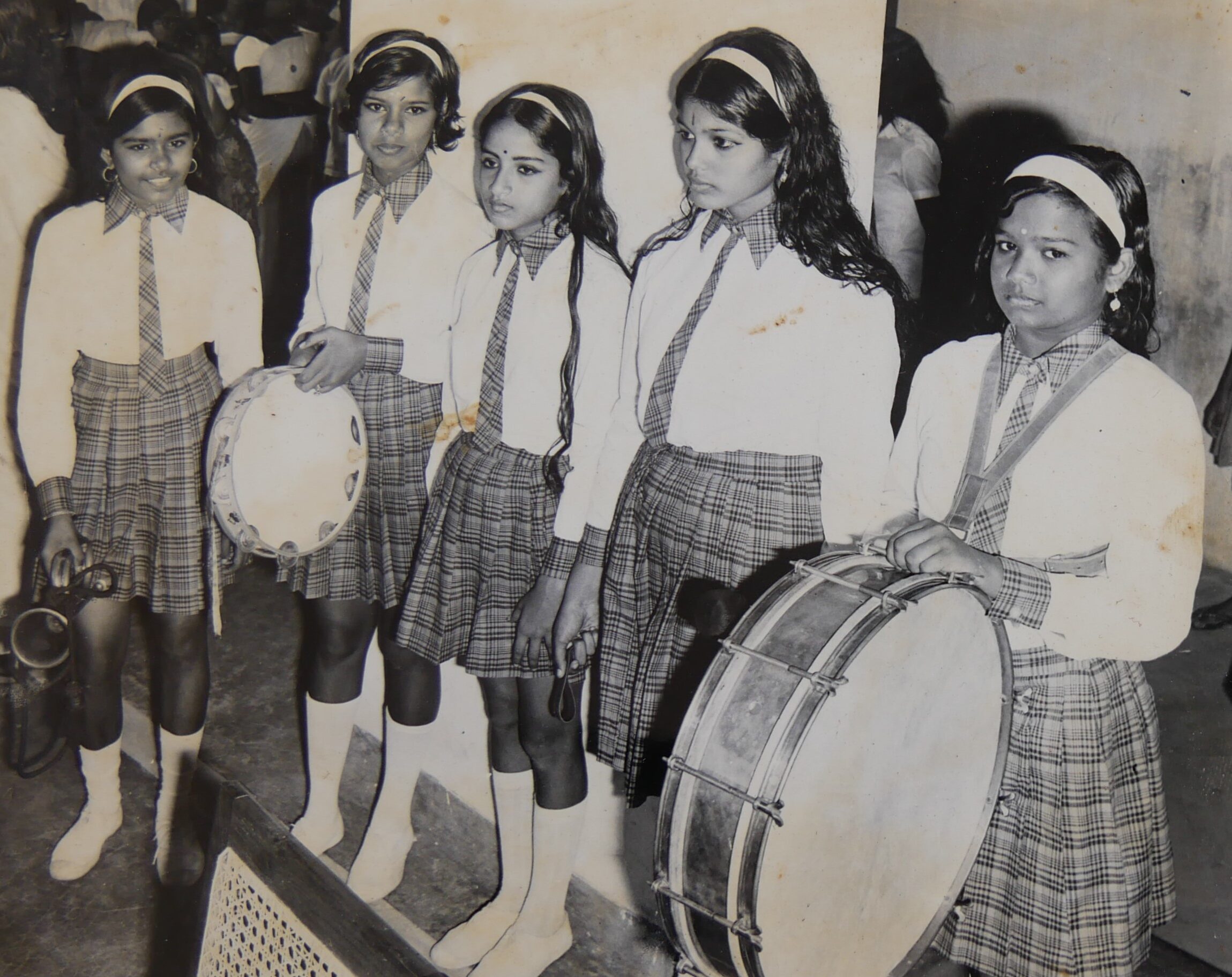
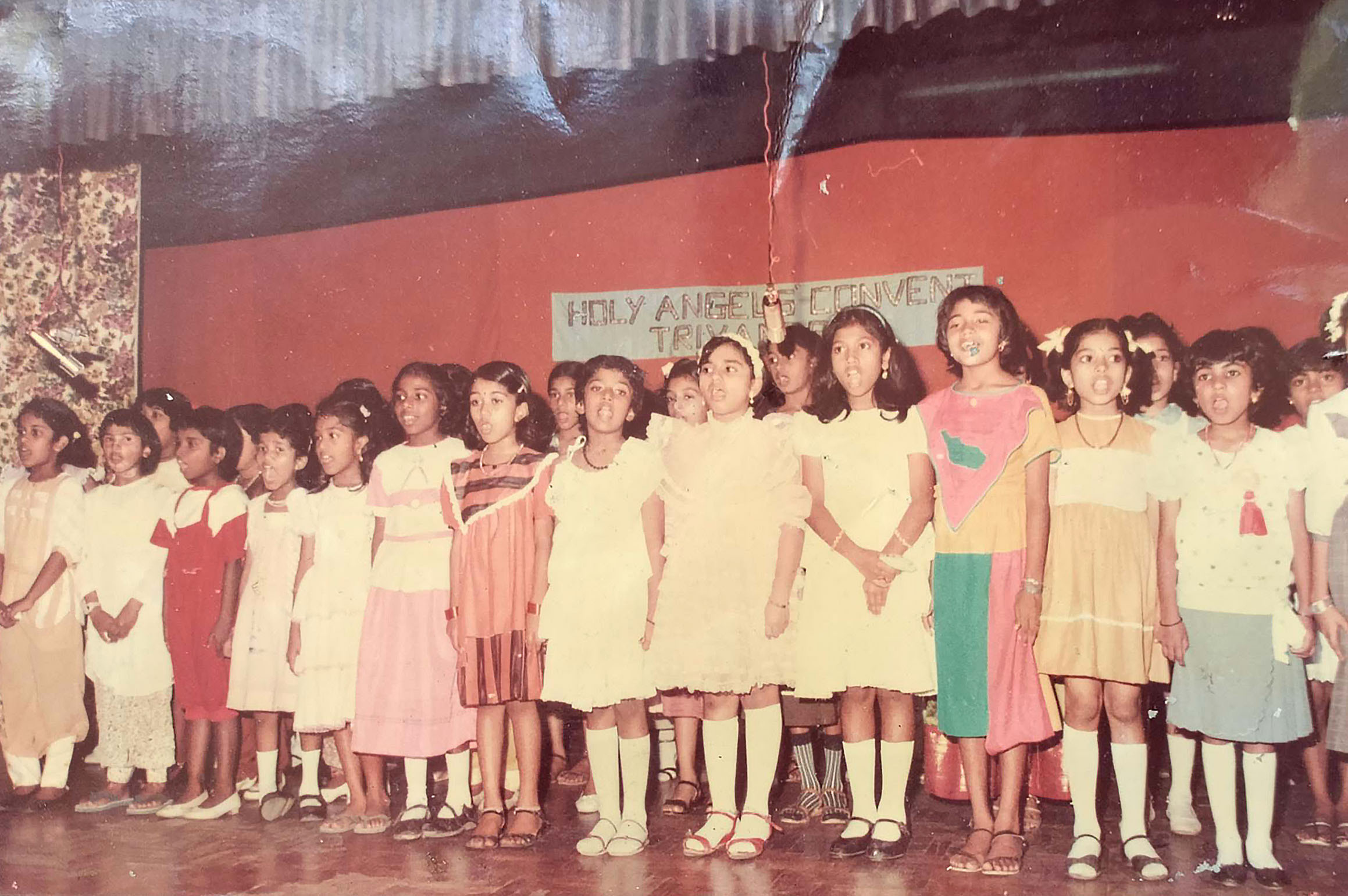
Dresses for Special Days
Children in middle school wear various clothing styles for this annual day event at Holy Angels Convent School in Thiruvananthapuram.
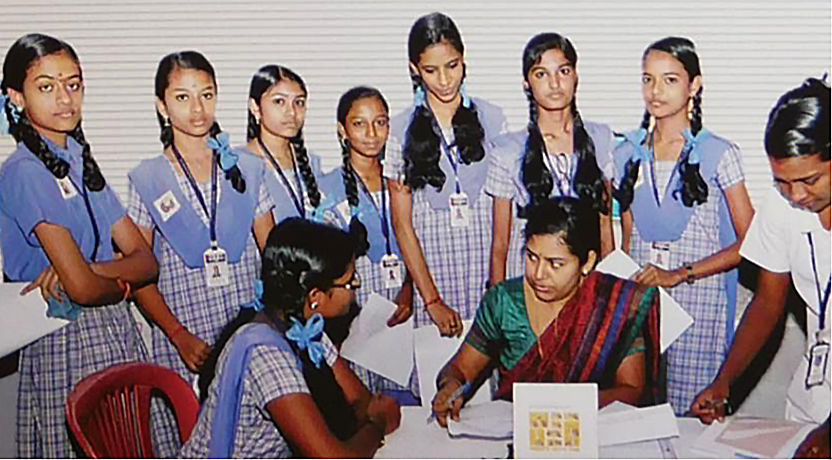
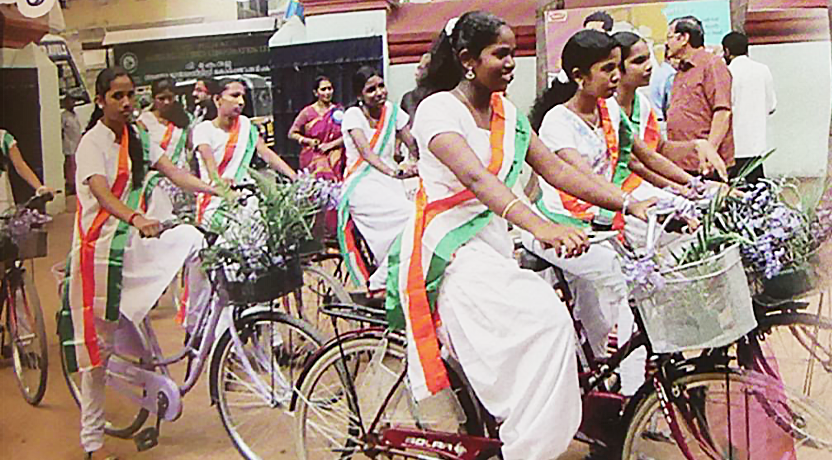
Comfort takes a Backseat
In India, women are perceived as bearers of culture and women’s clothes are viewed as part of that culture. Therefore, there is a feeling among people that changes to women’s clothing are equivalent to deviating from custom and tradition. Added to that is a general anxiety centred on controlling women’s chastity and modesty, both seen as connected to women’s dressing.
Discipline, uniformity, modesty, and aesthetics are considered more important than comfort and ease of maintenance when uniforms are designed for students, especially female students.
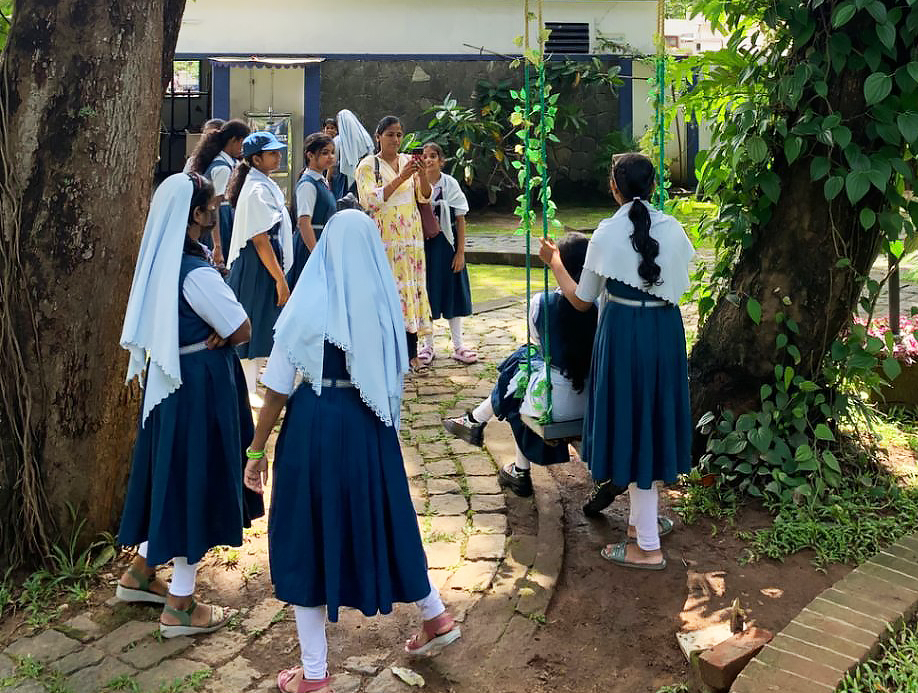
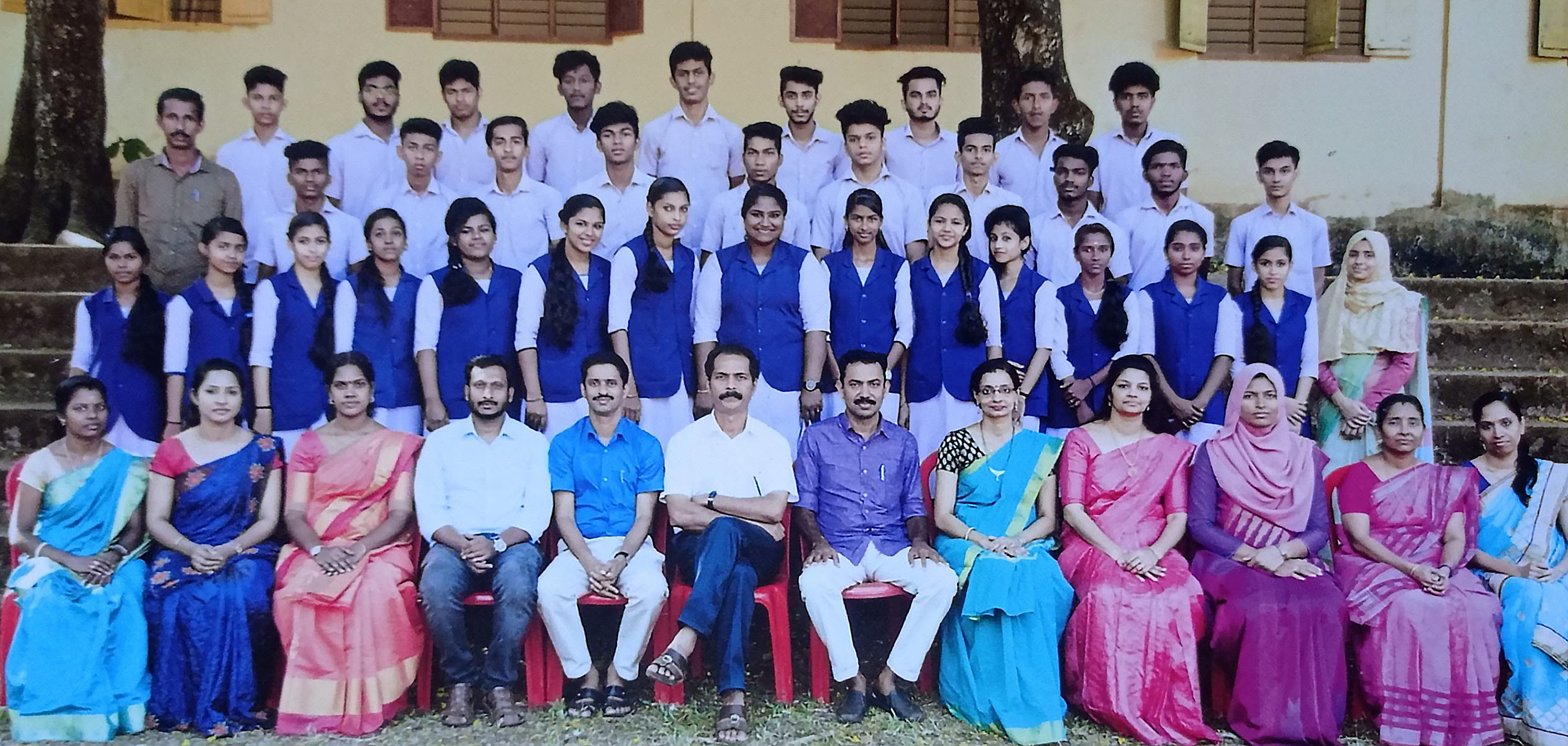
From Duppattas to Waistcoats
Higher secondary and professional college students wear salwar kameezes or pants and shirts with waistcoats at present in Kerala.
“In 2010 we had to wear waistcoats in Engineering College with our pants and shirts. The boys did not have to wear it. It was made of thick material, which was hot and uncomfortable to wear.”
– Titta Antony, 34, Engineer, Kakkanad, 2024
“Schools that switch over to the waistcoat do not switch back to the dupatta.”
– Saro Krishna, Ernakulam, 2023.
